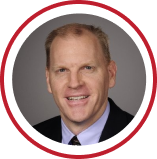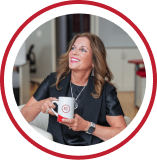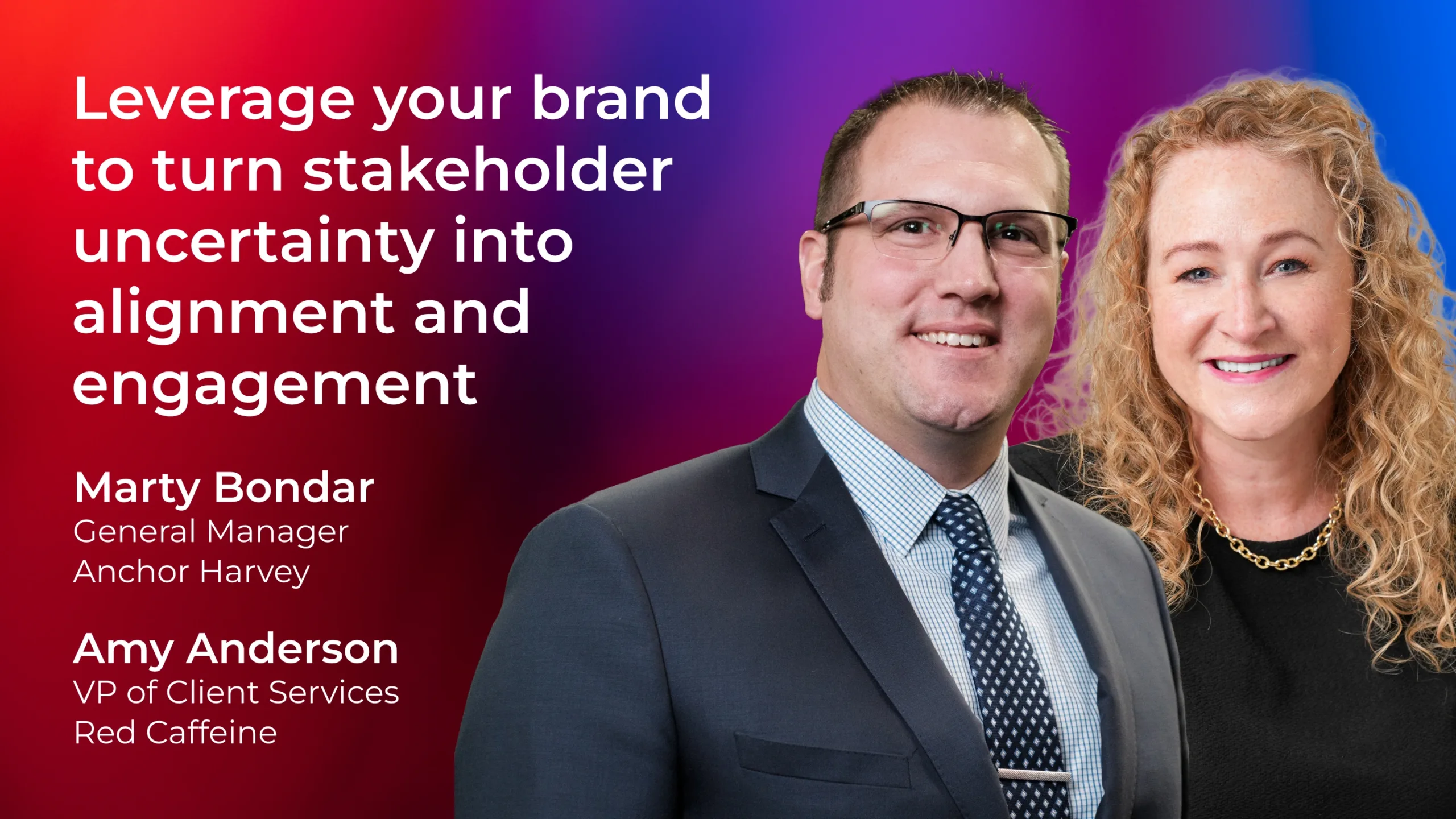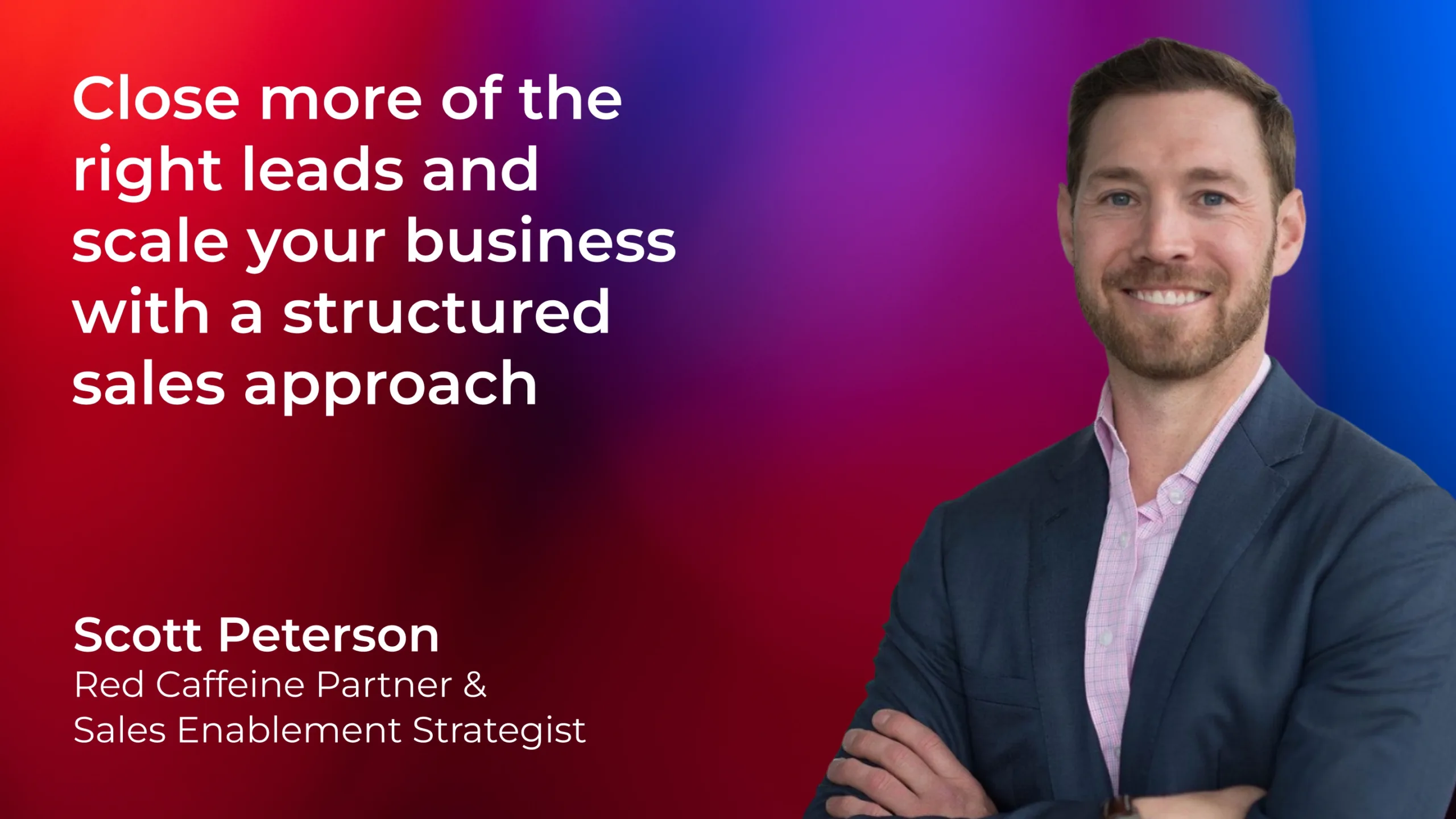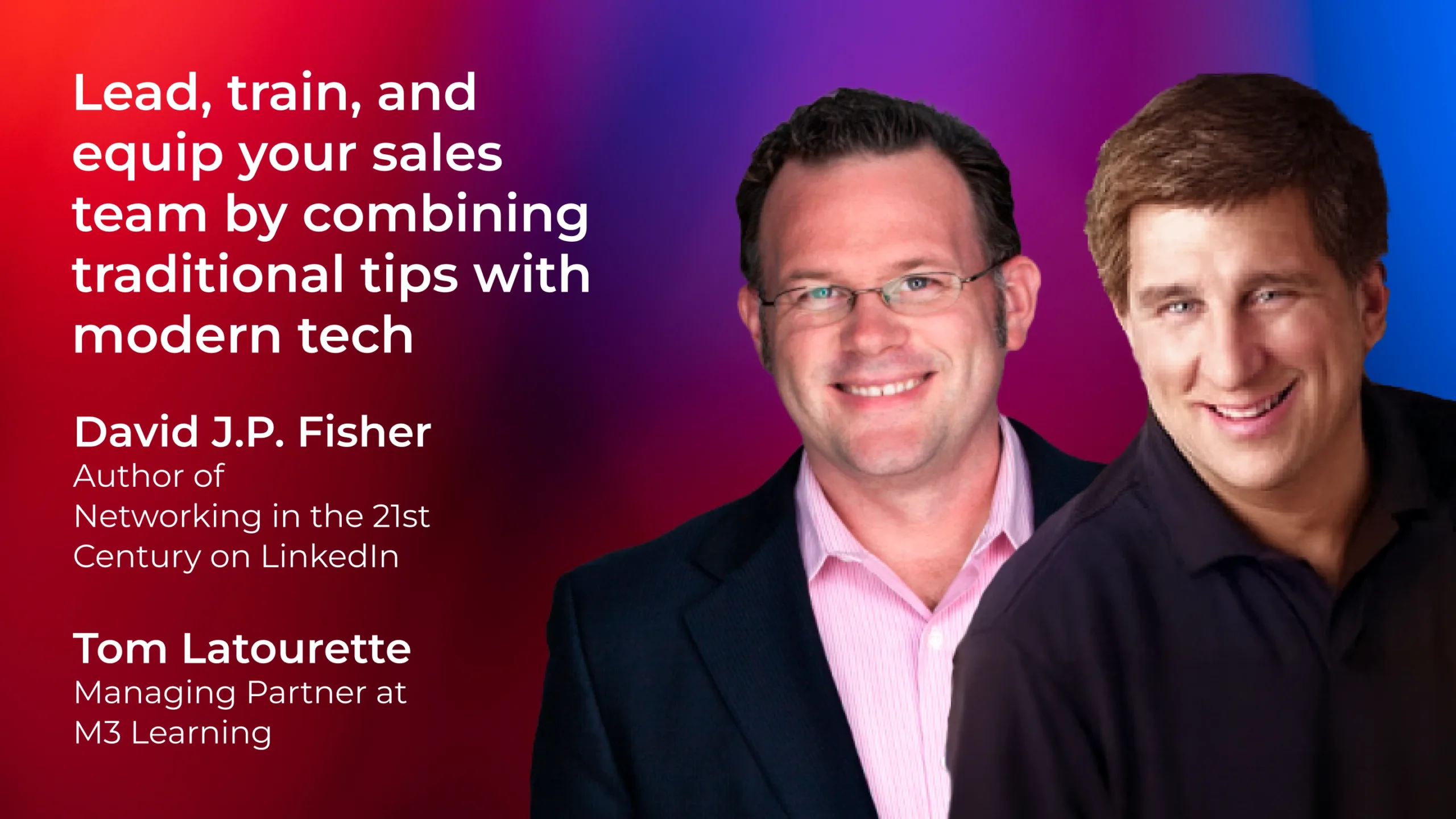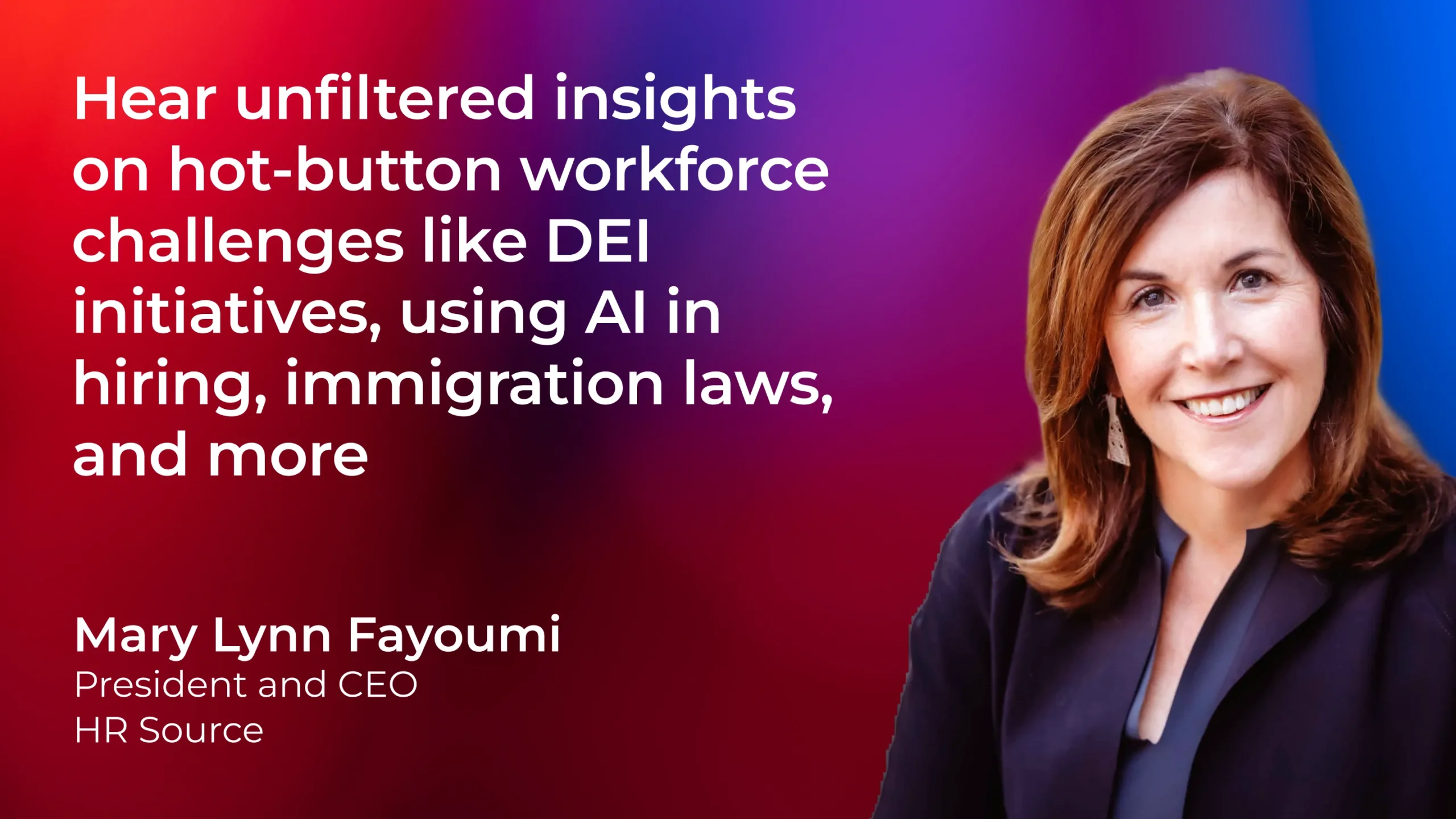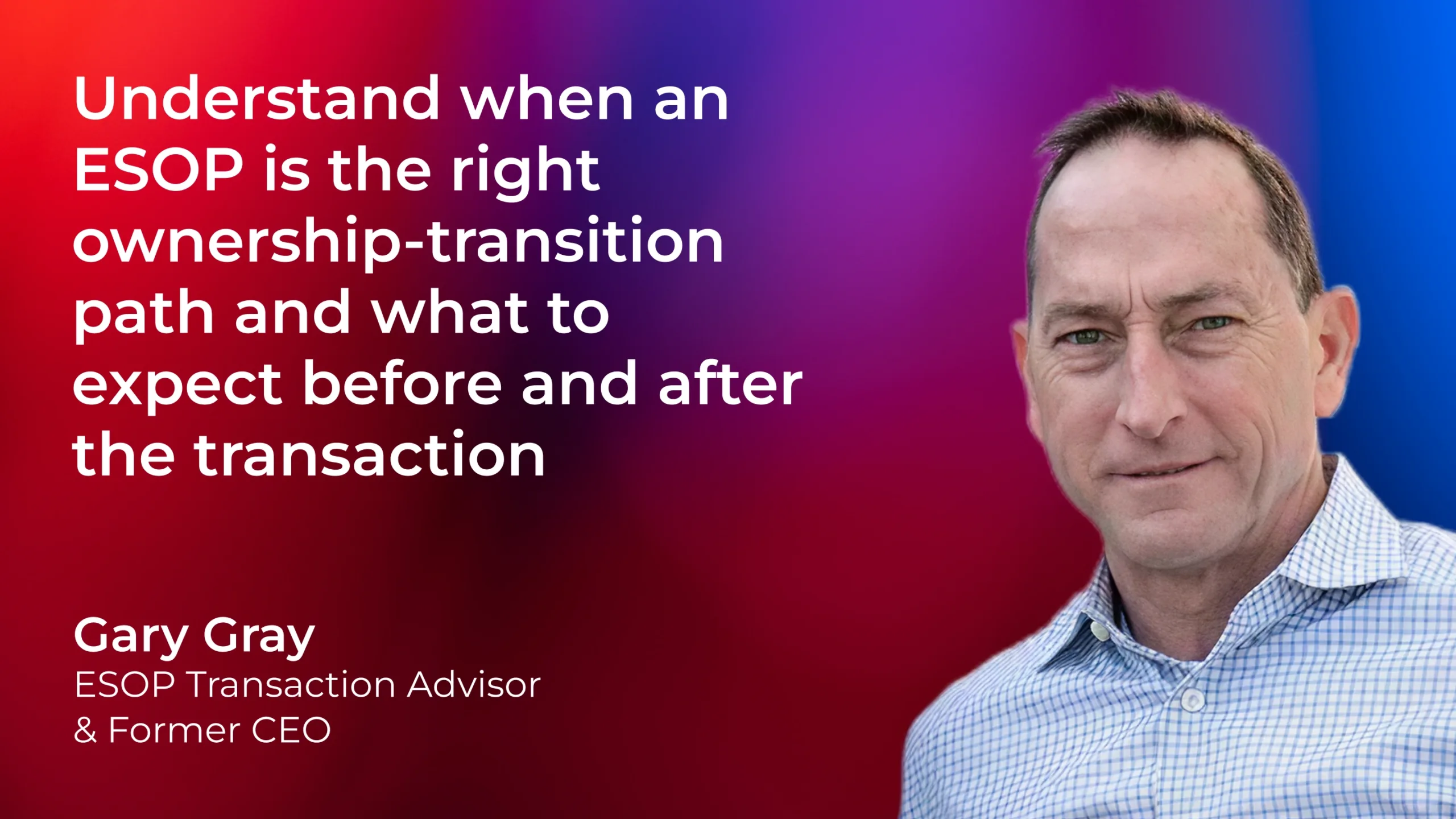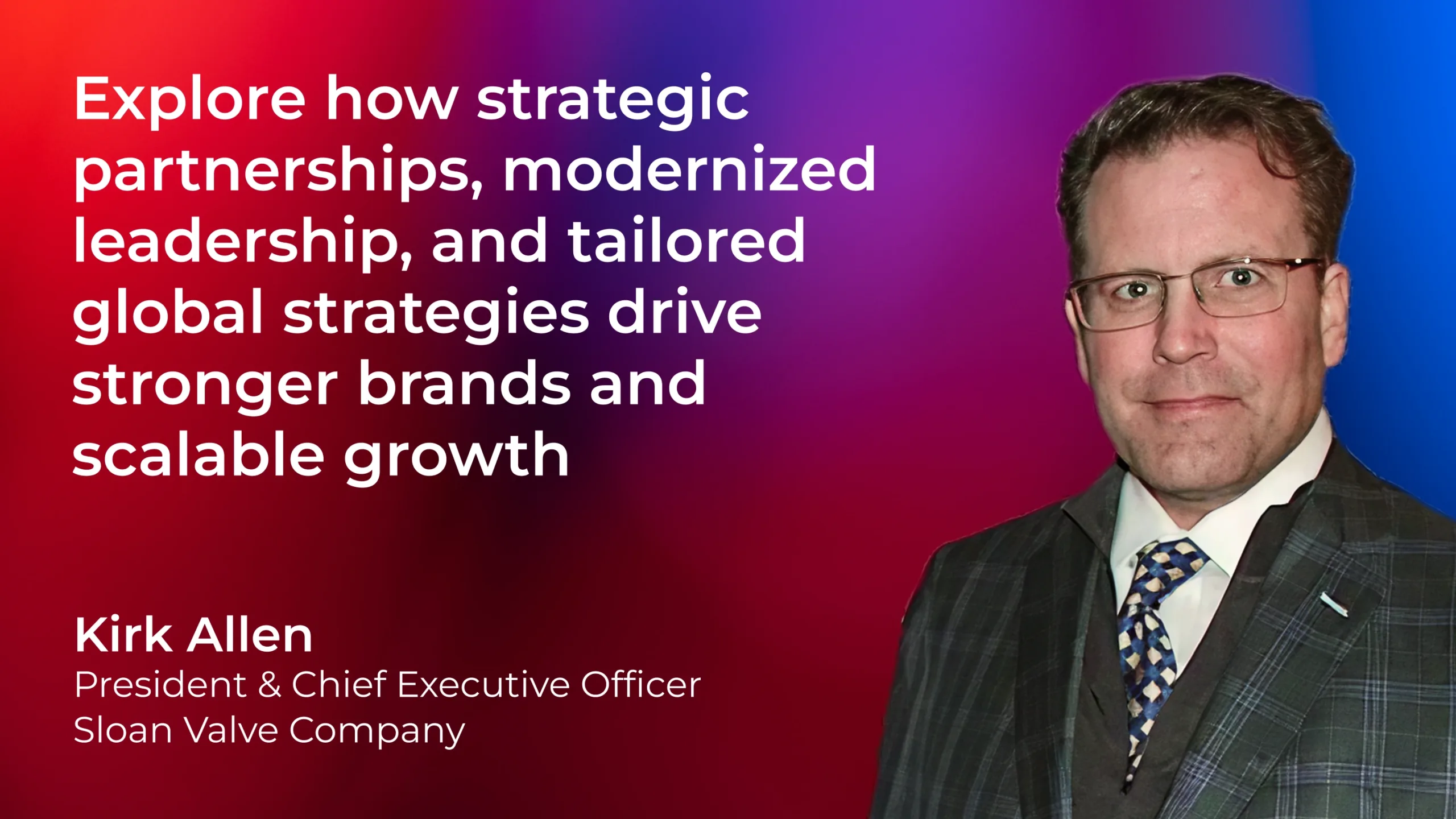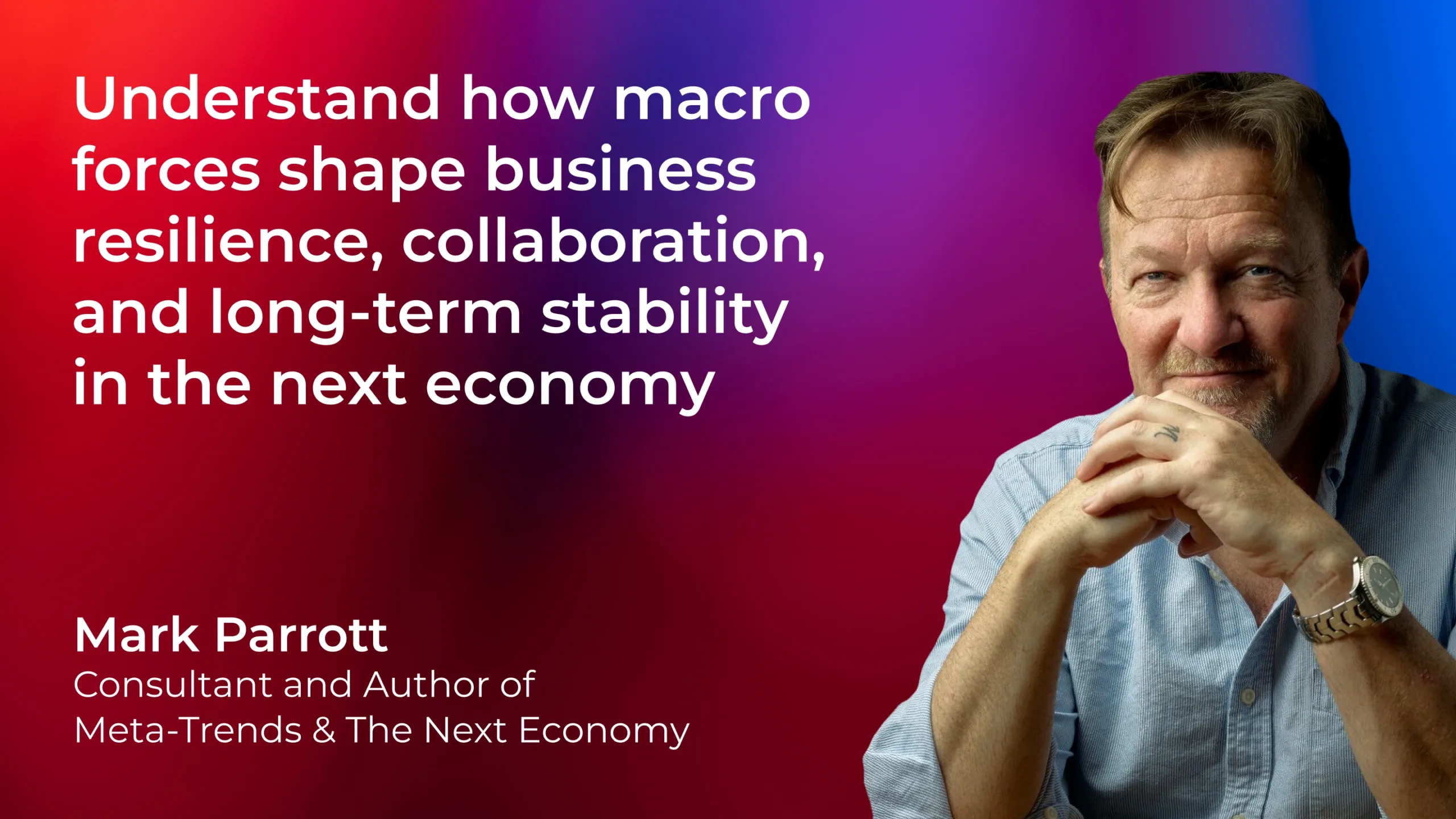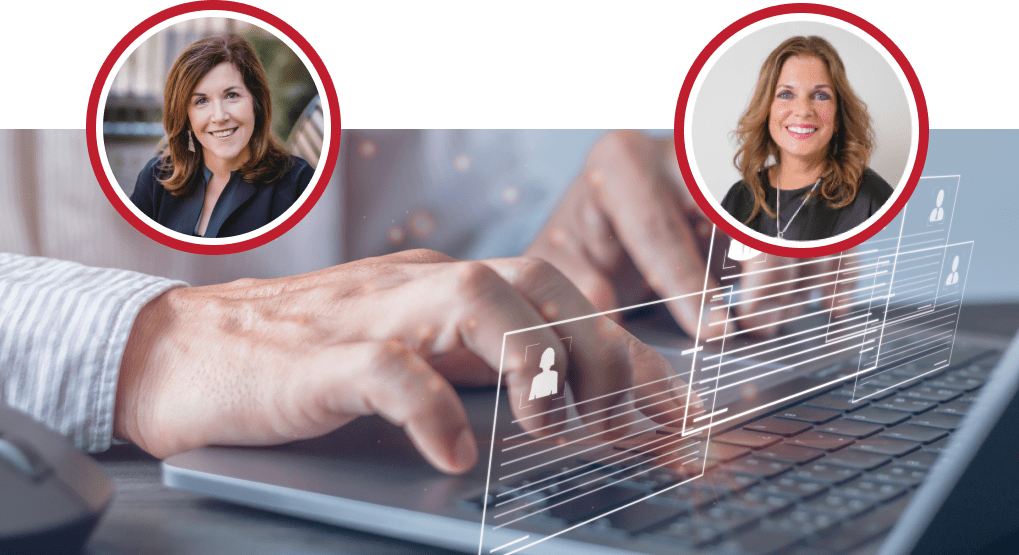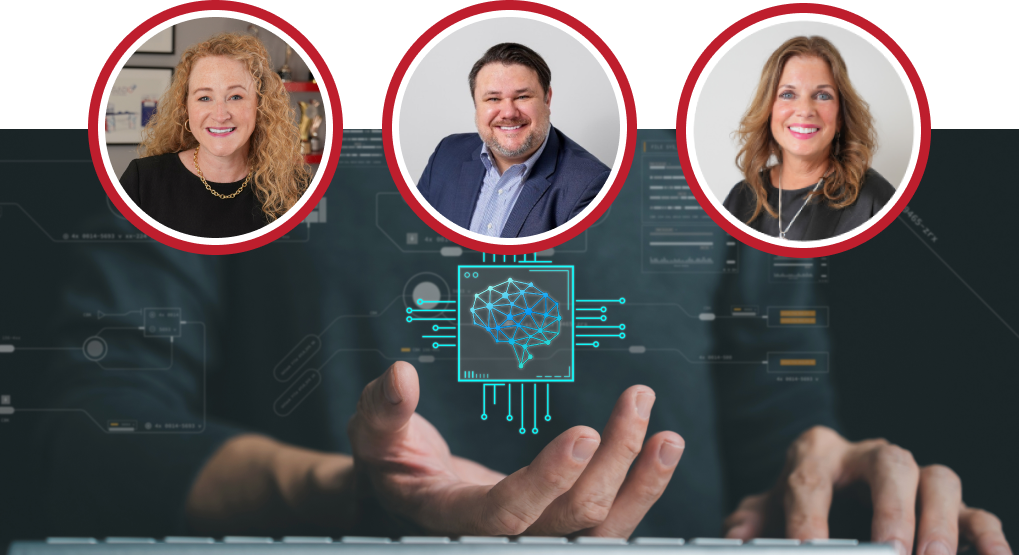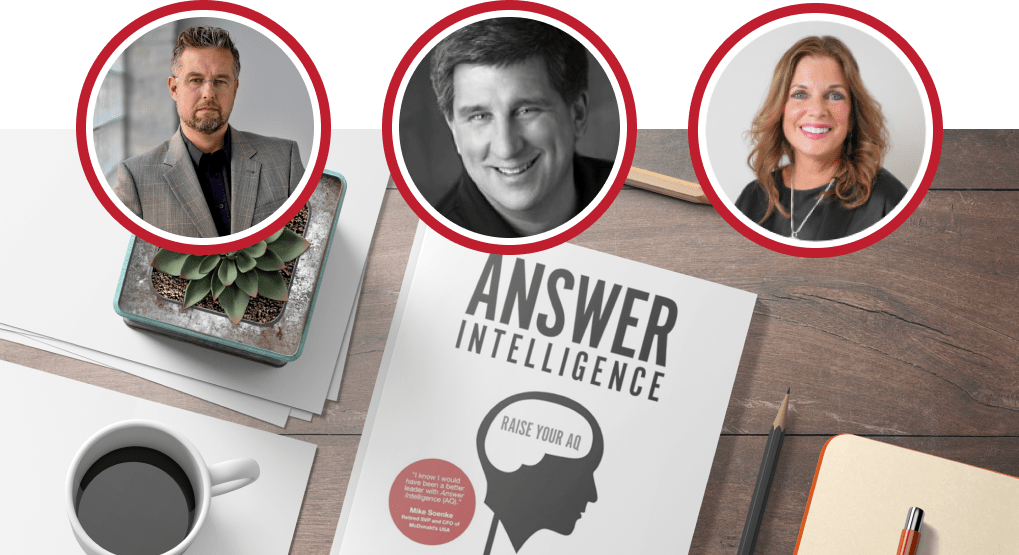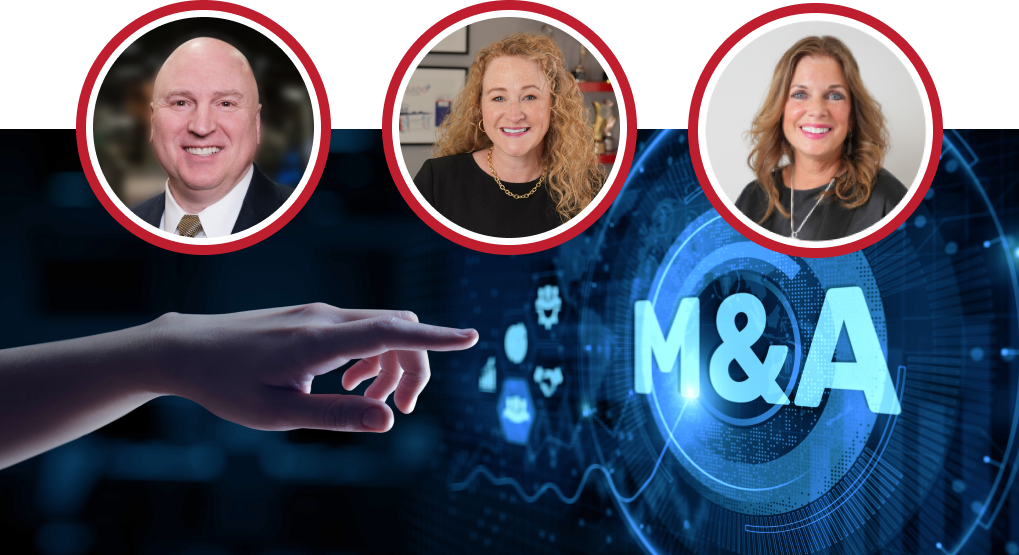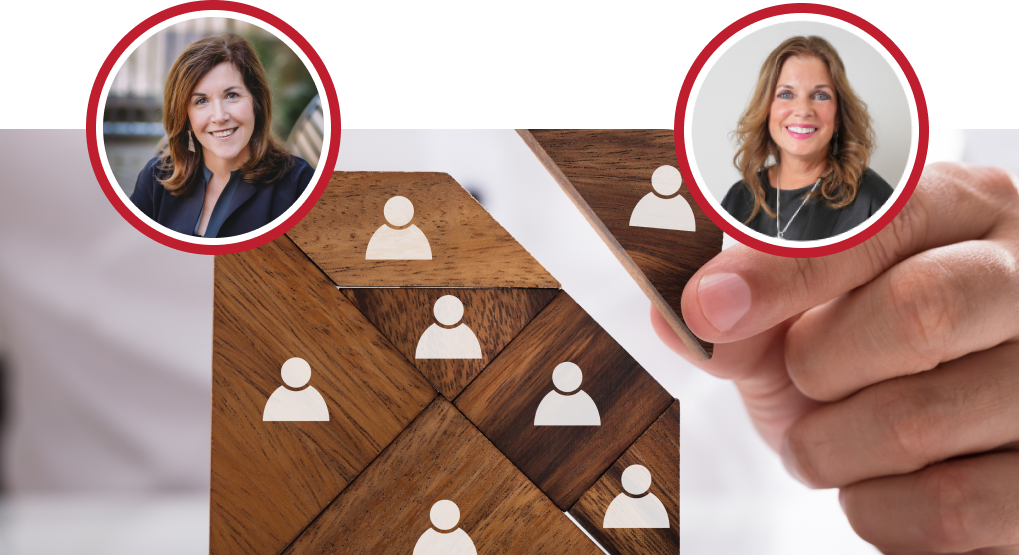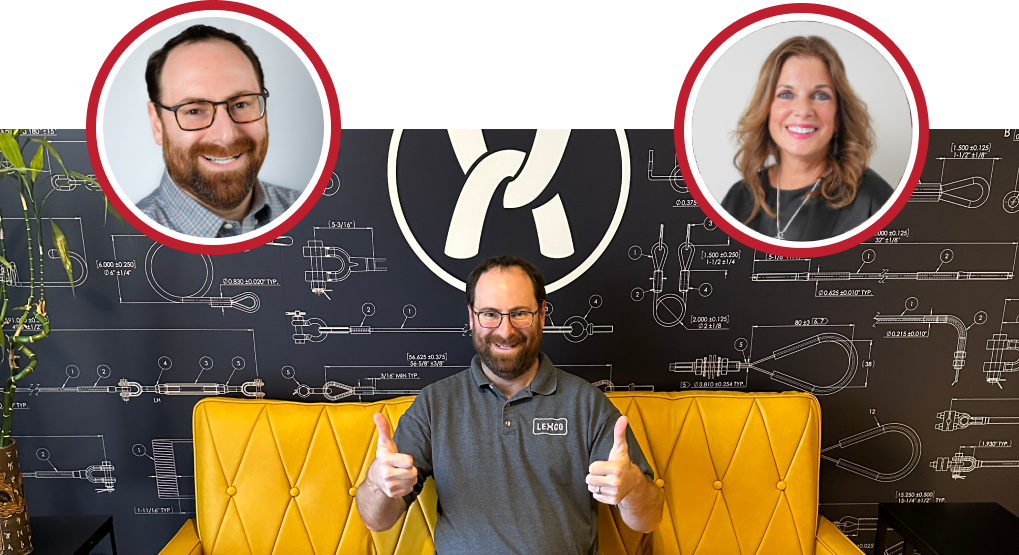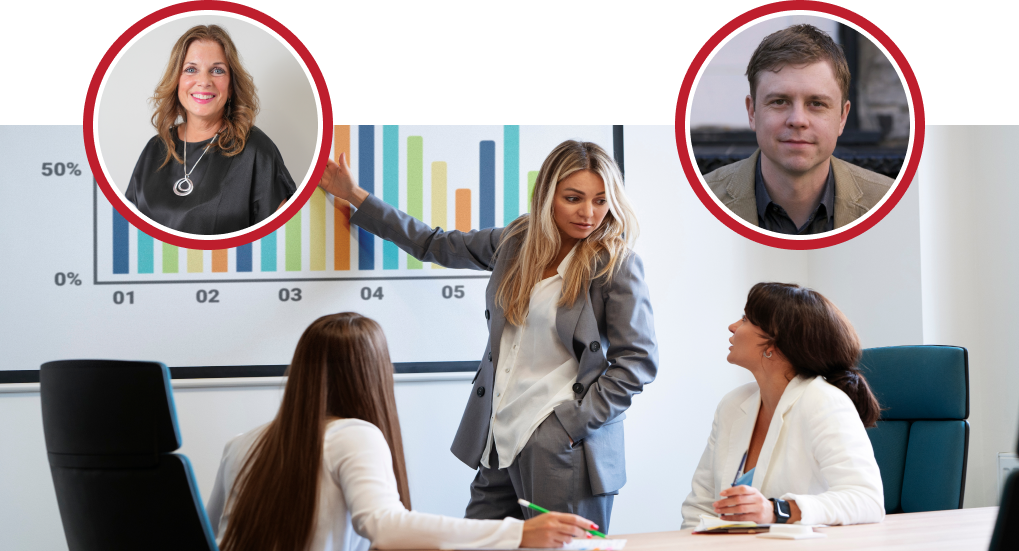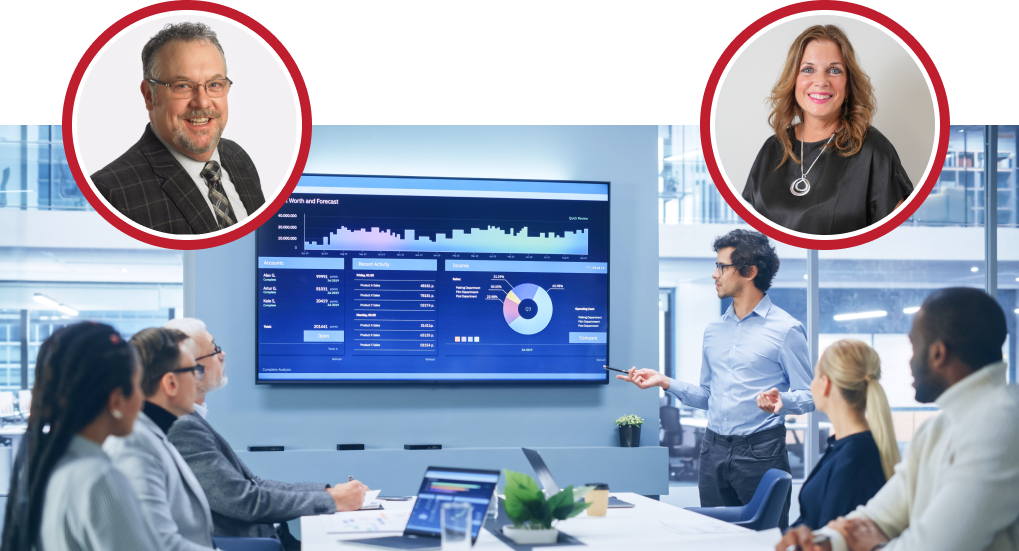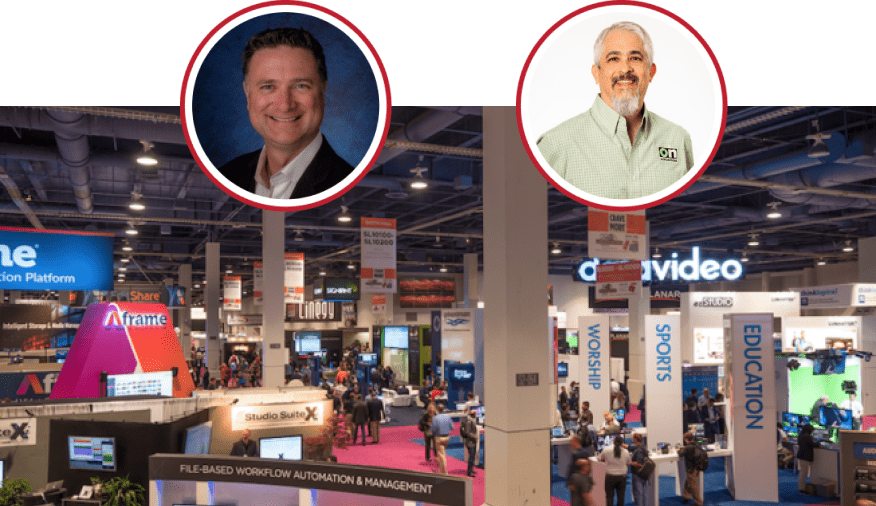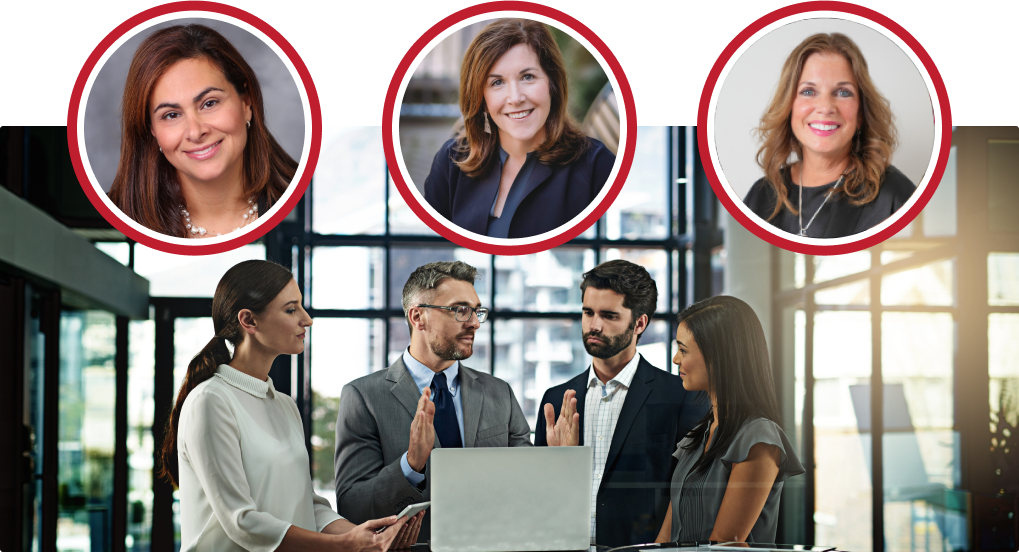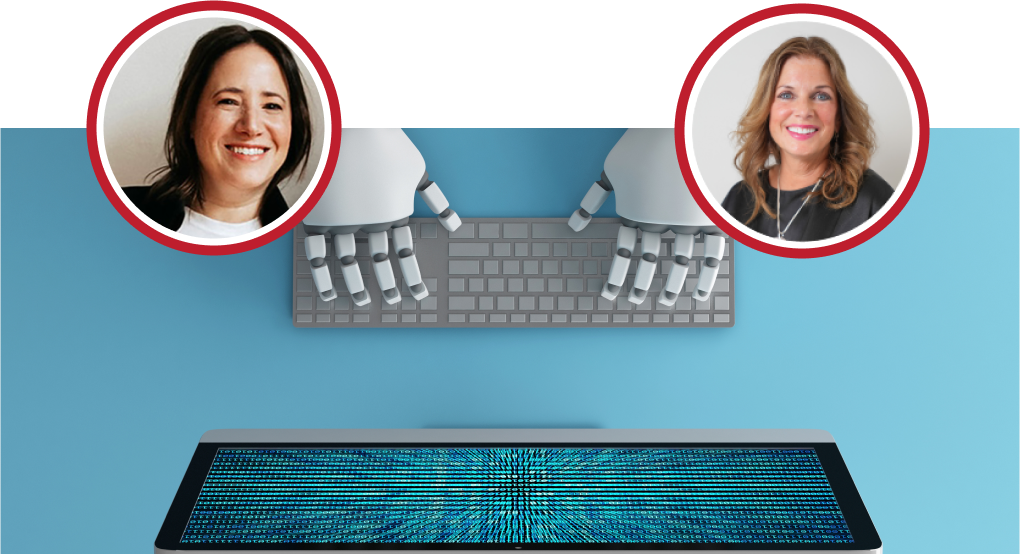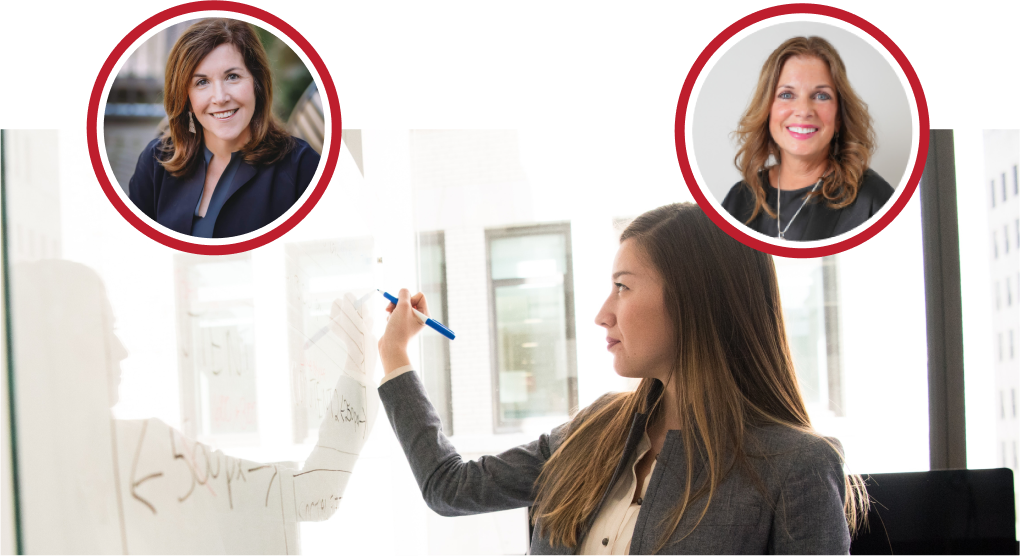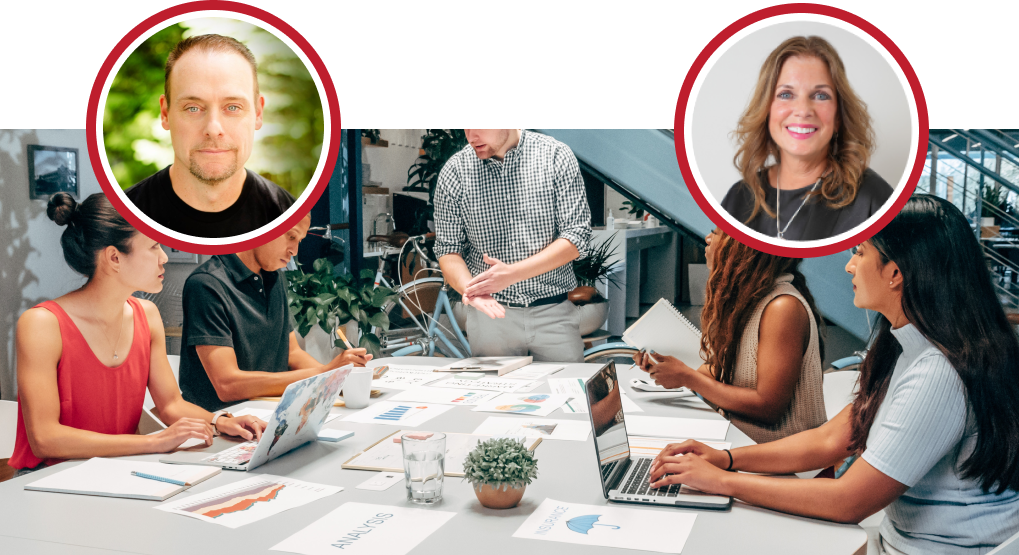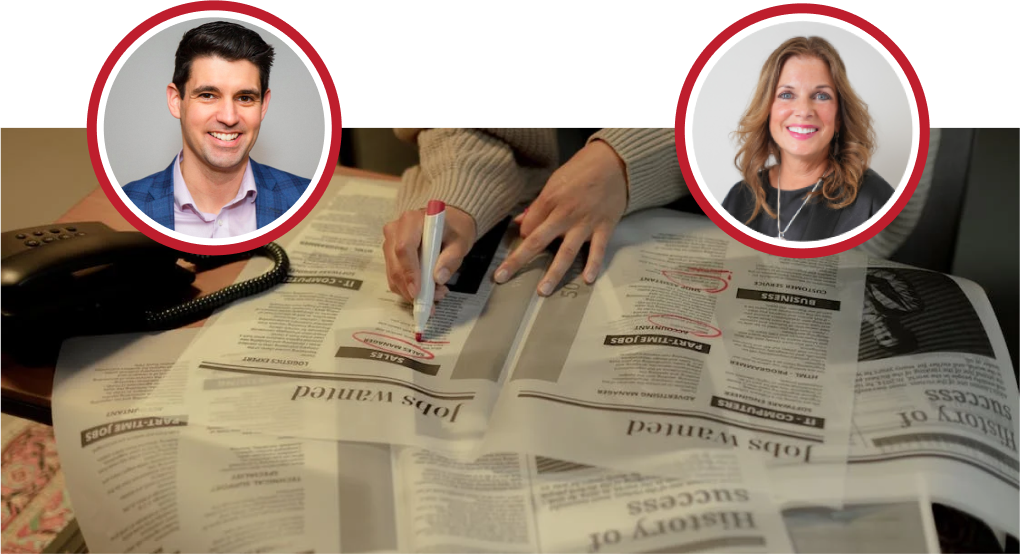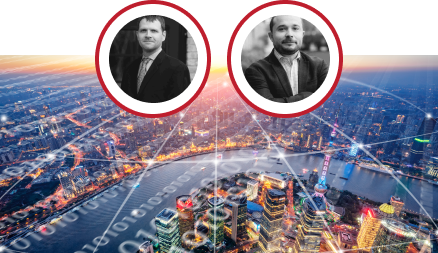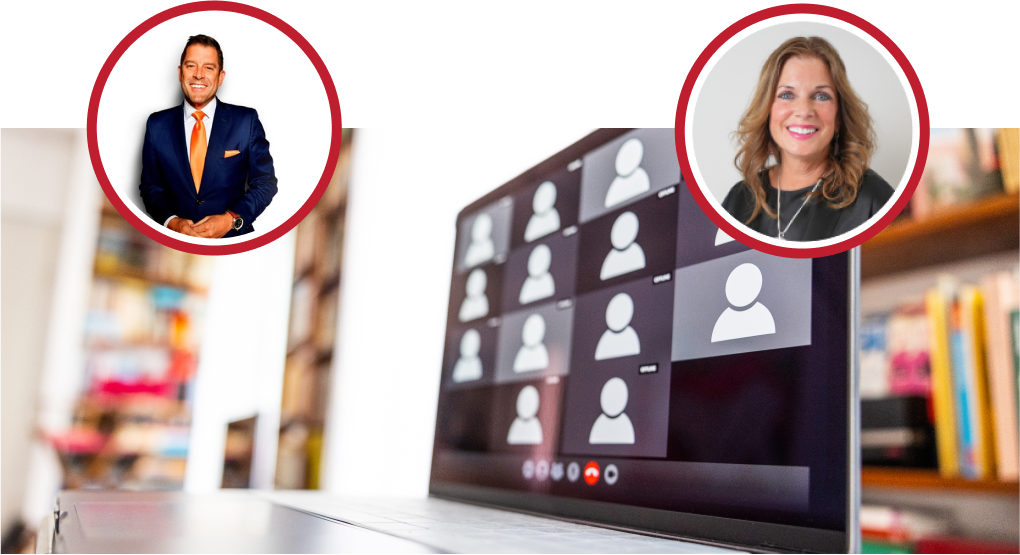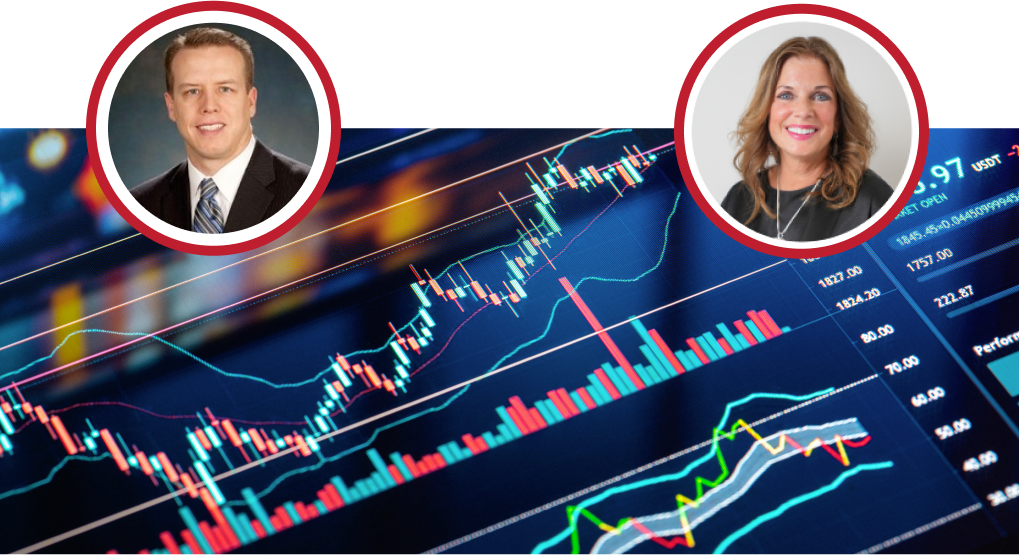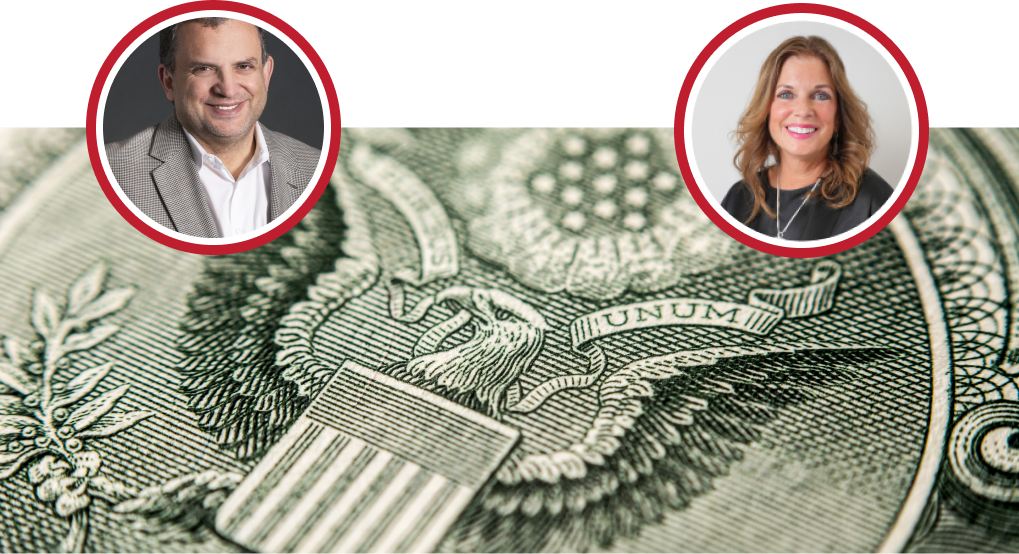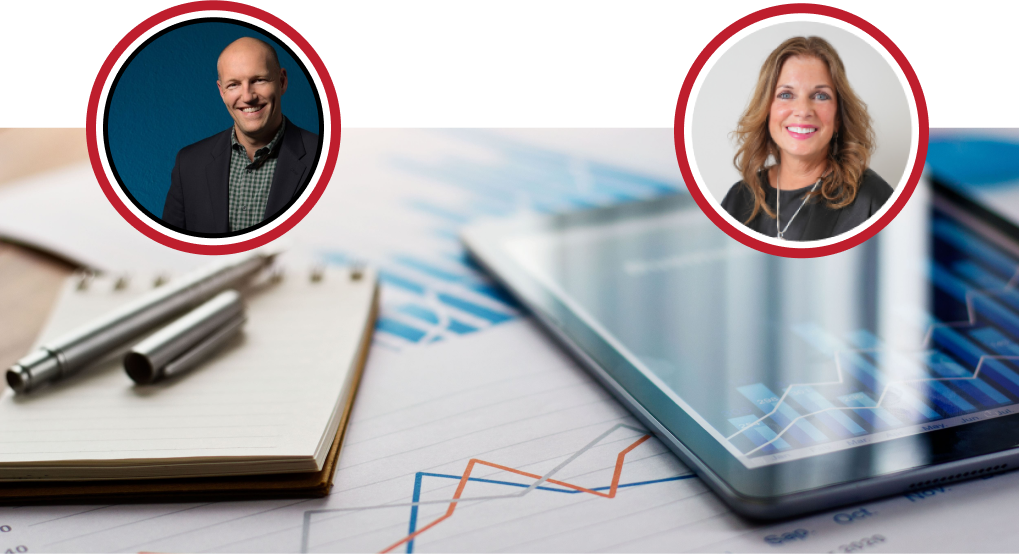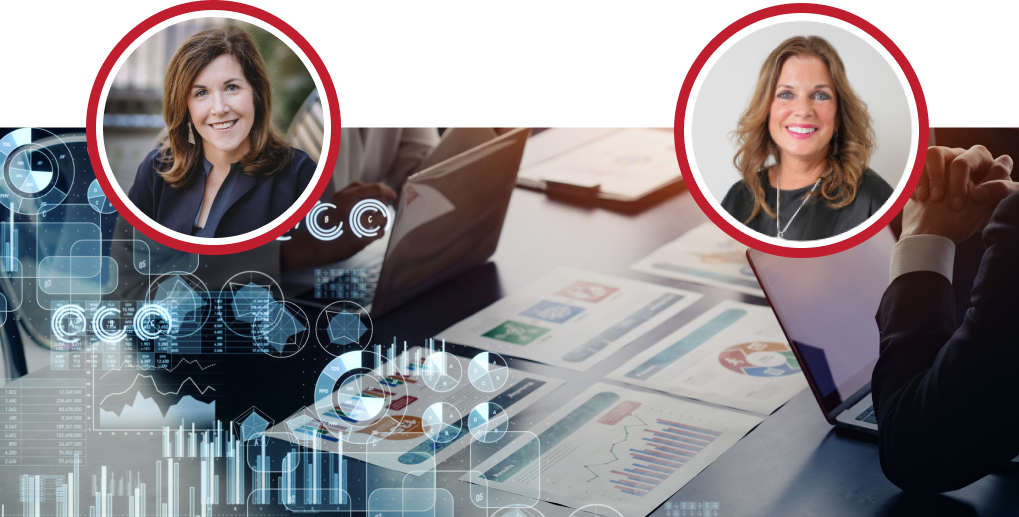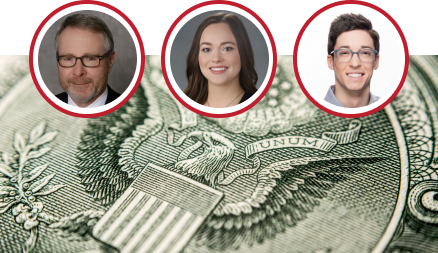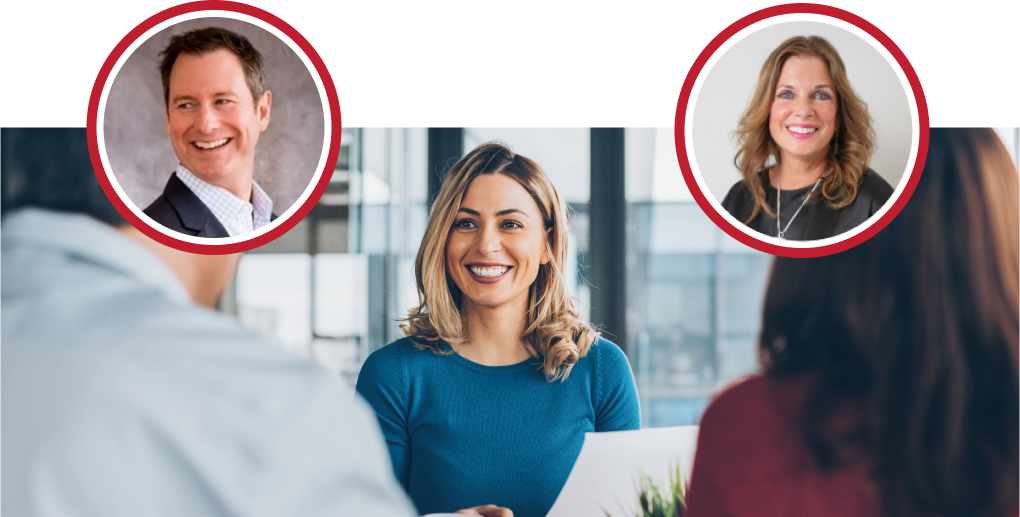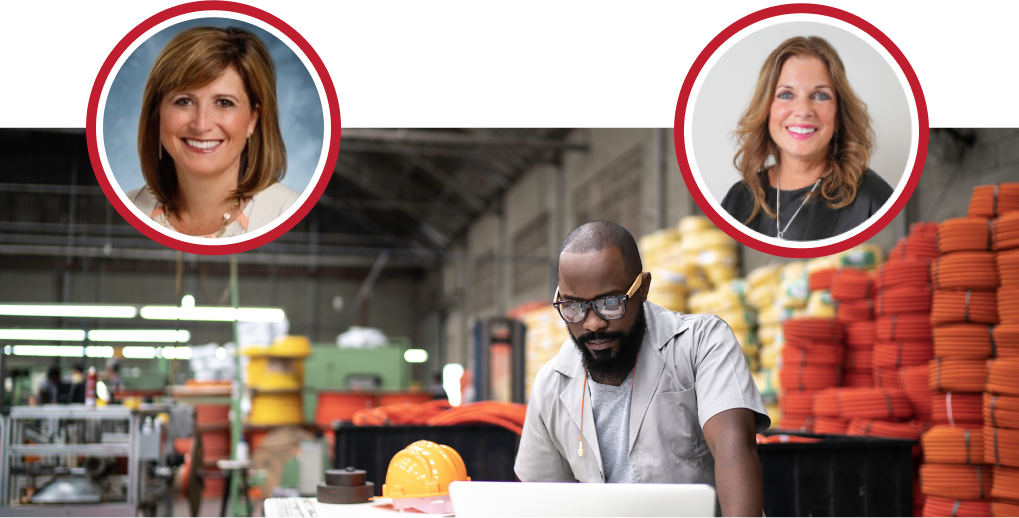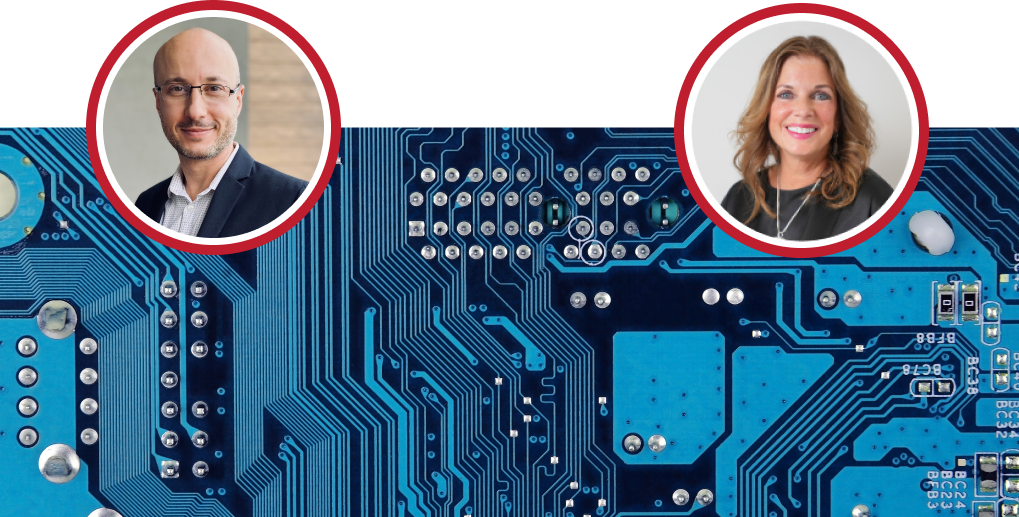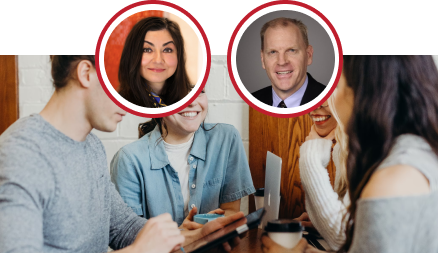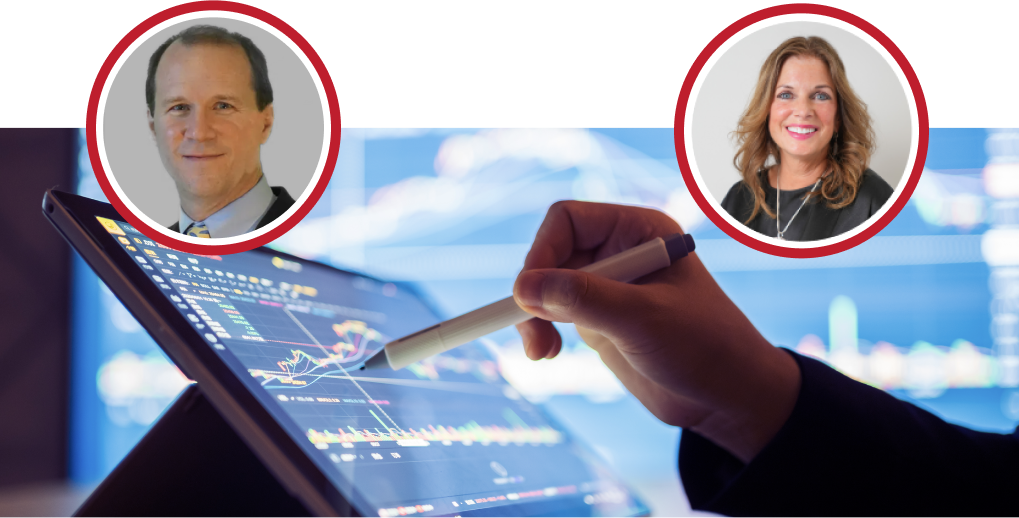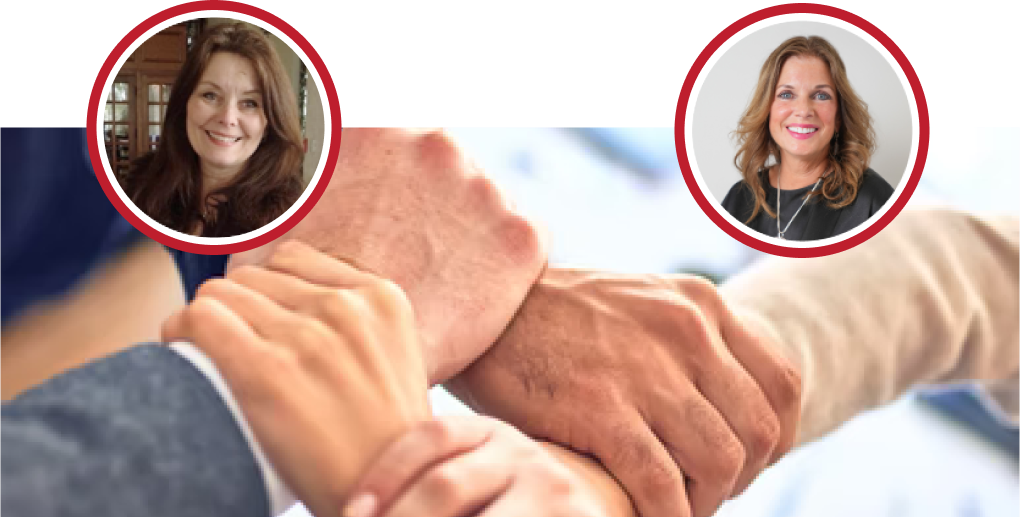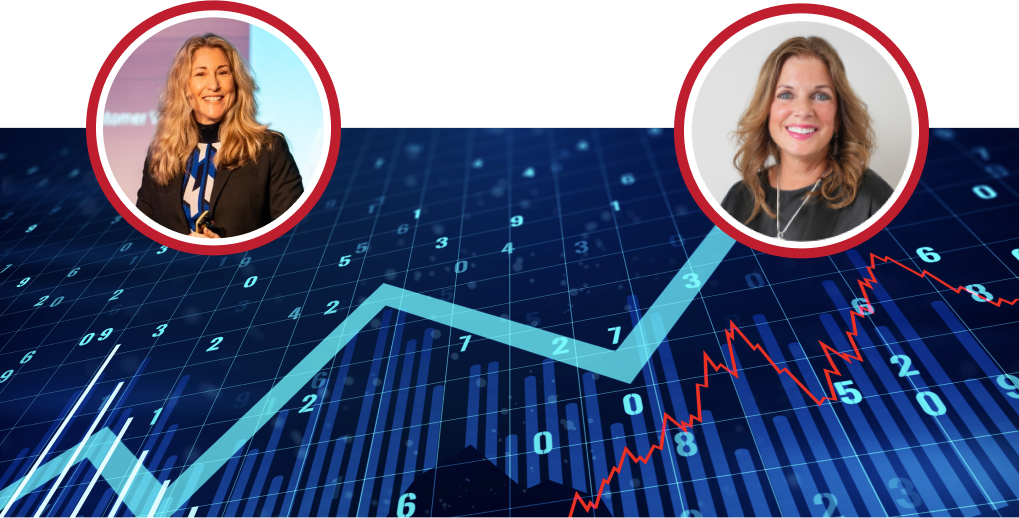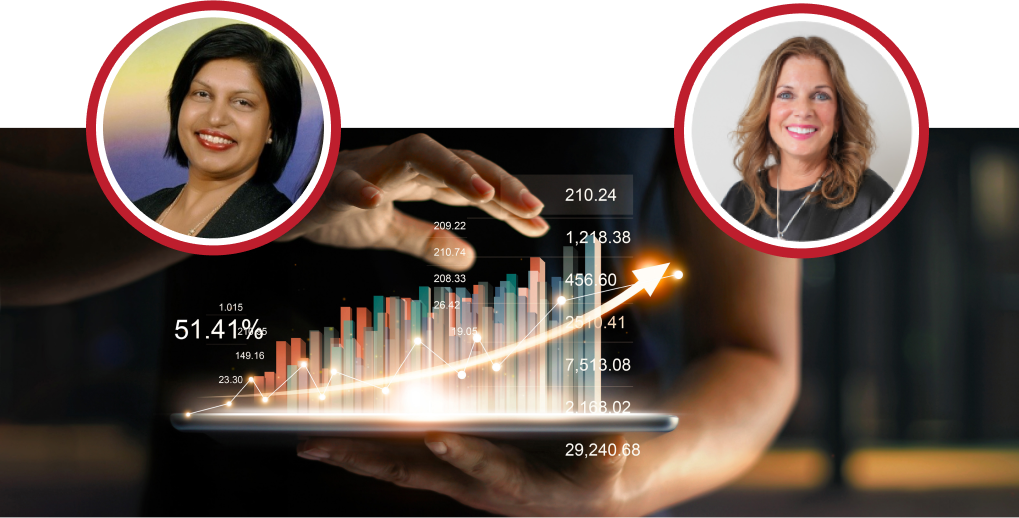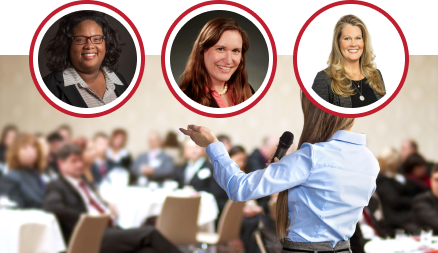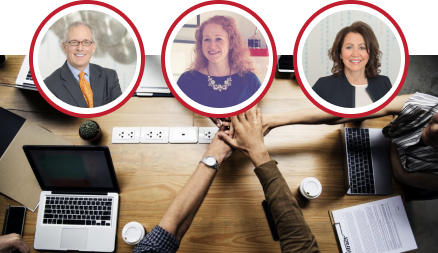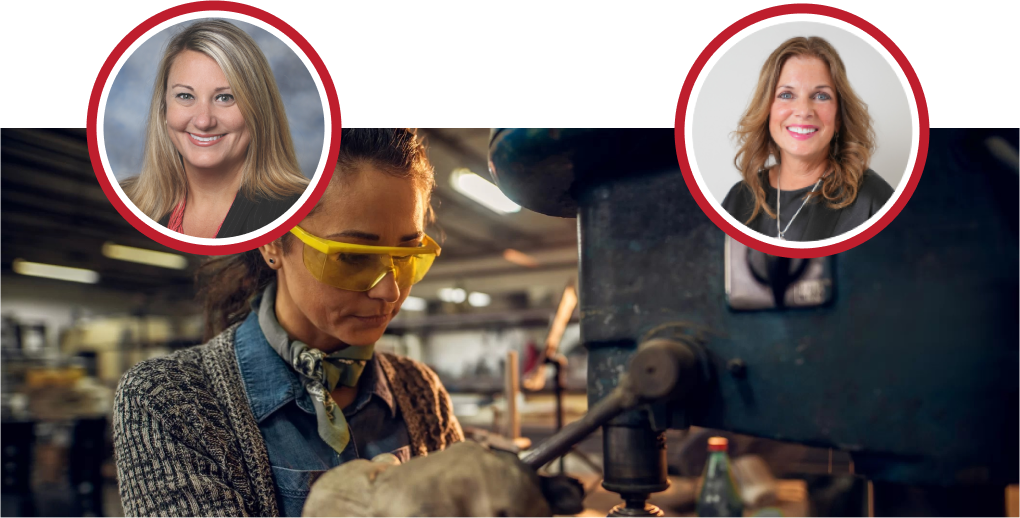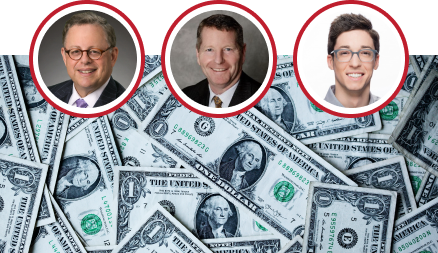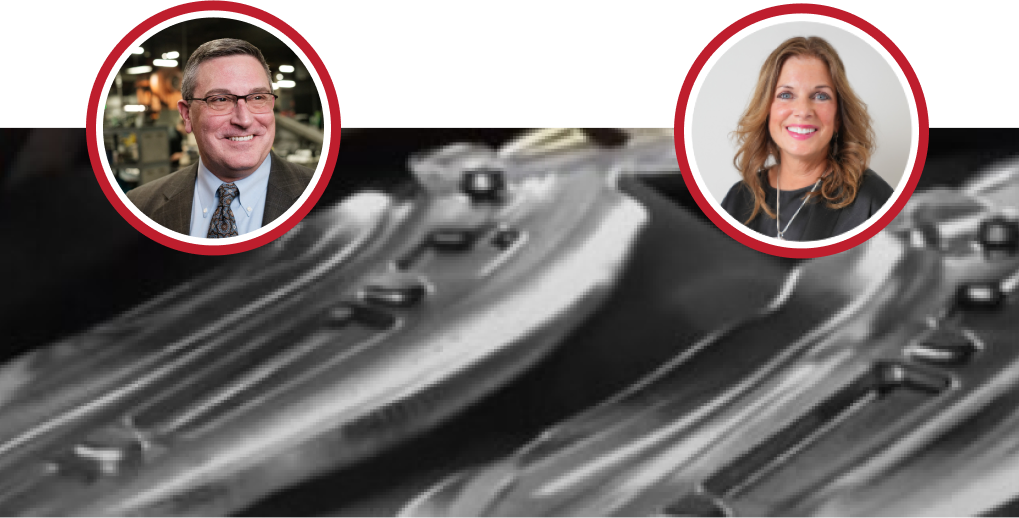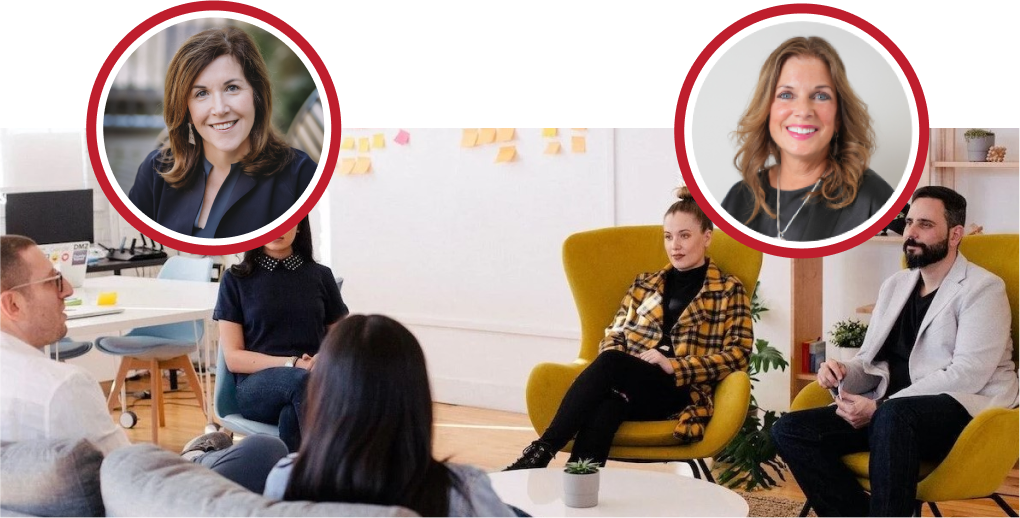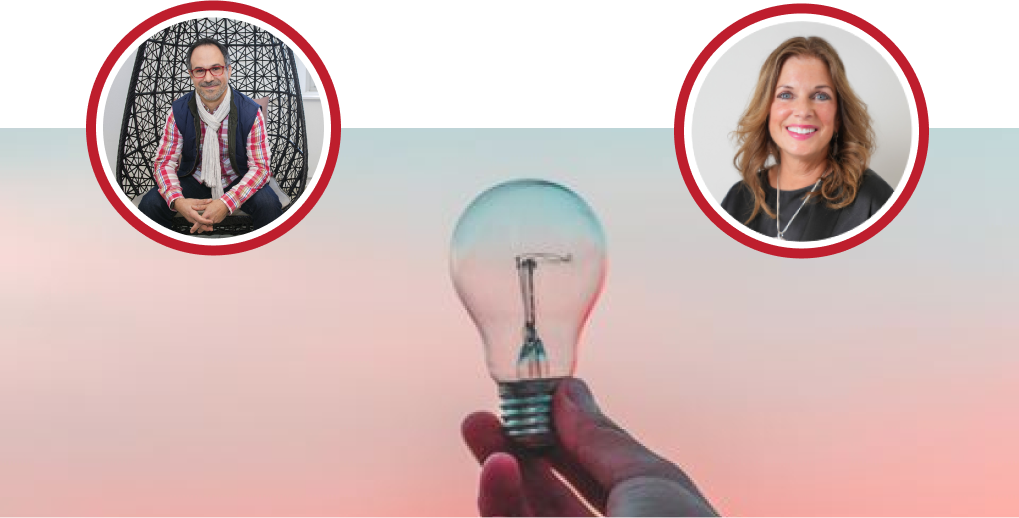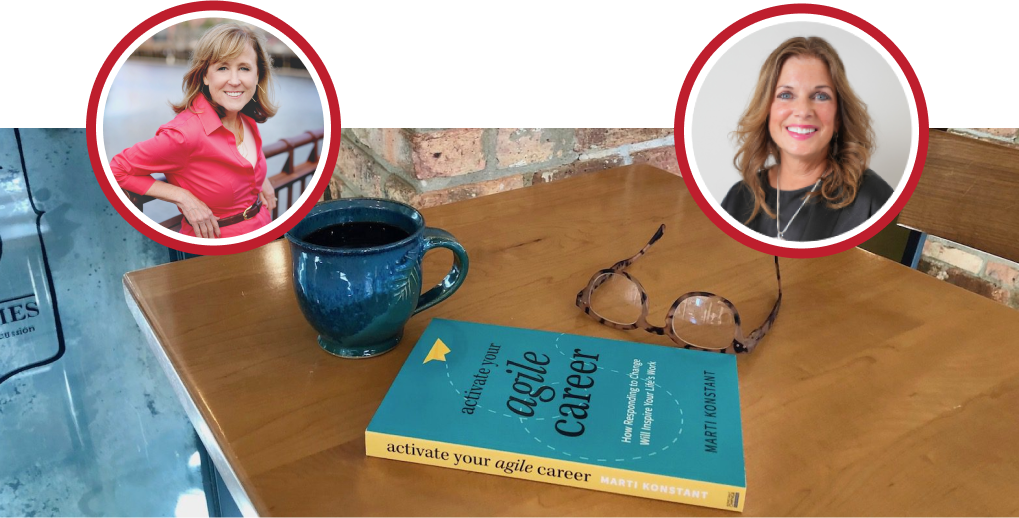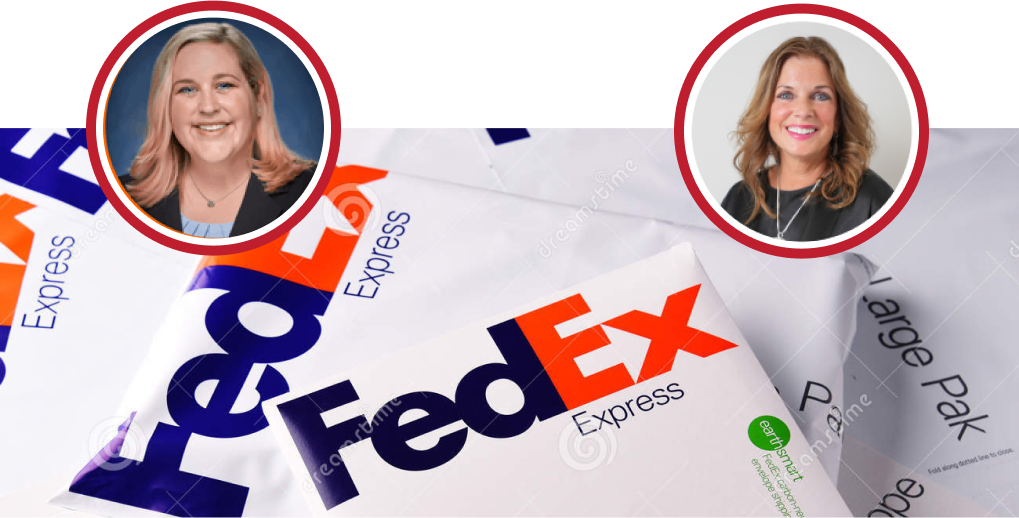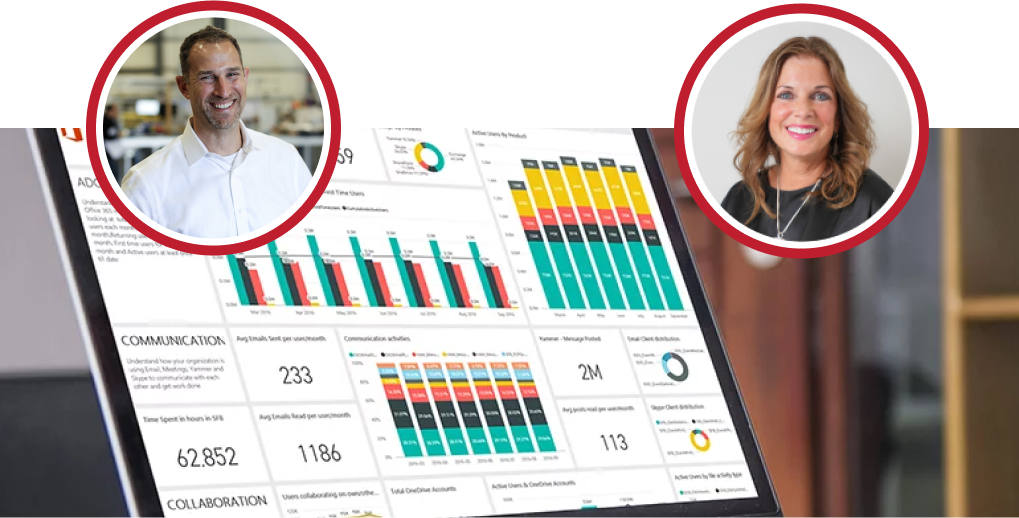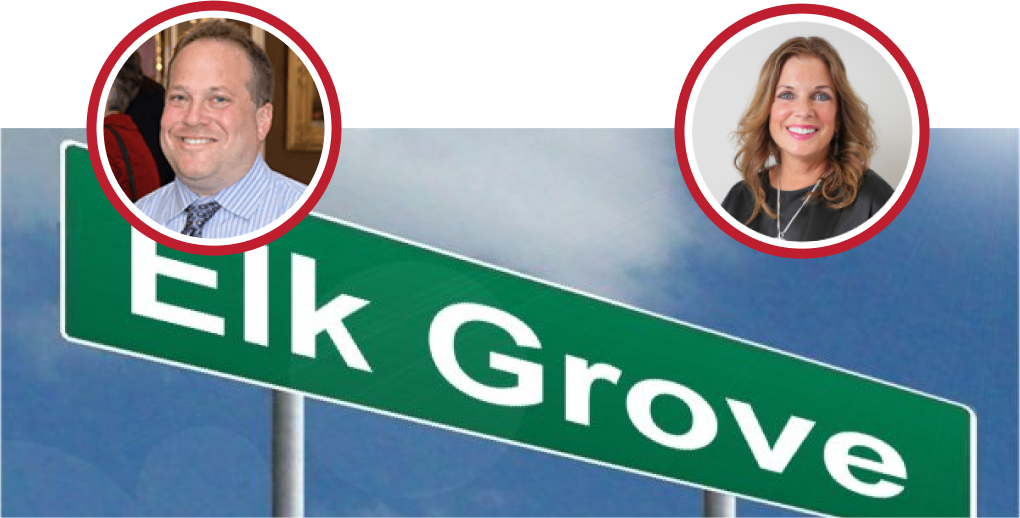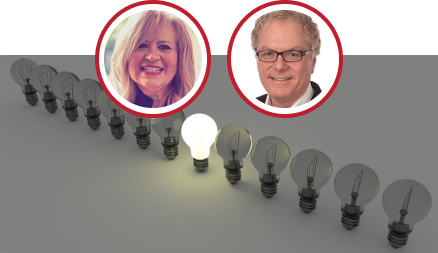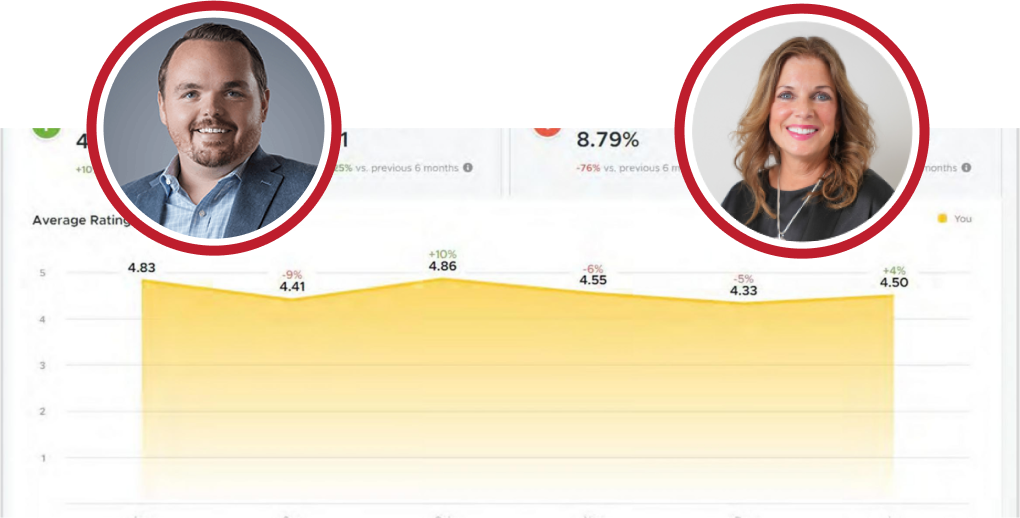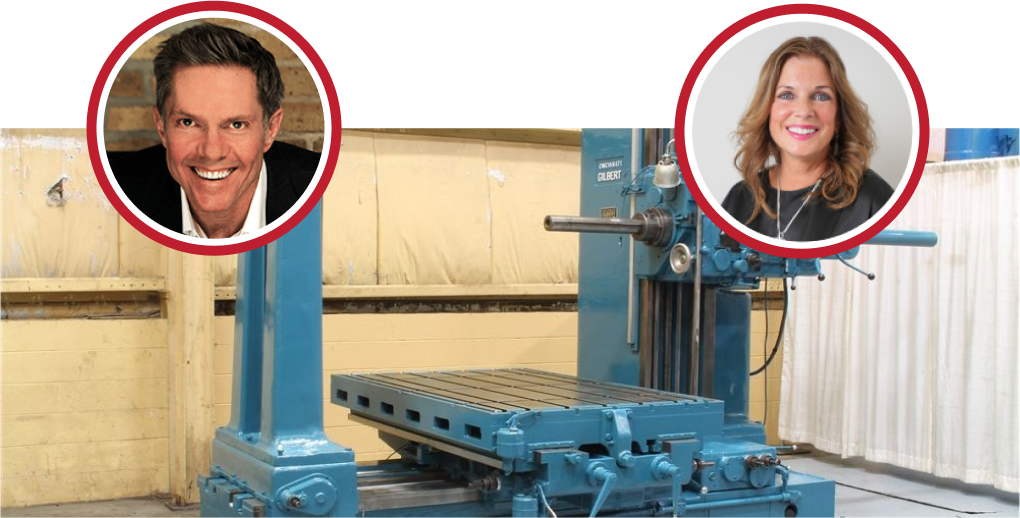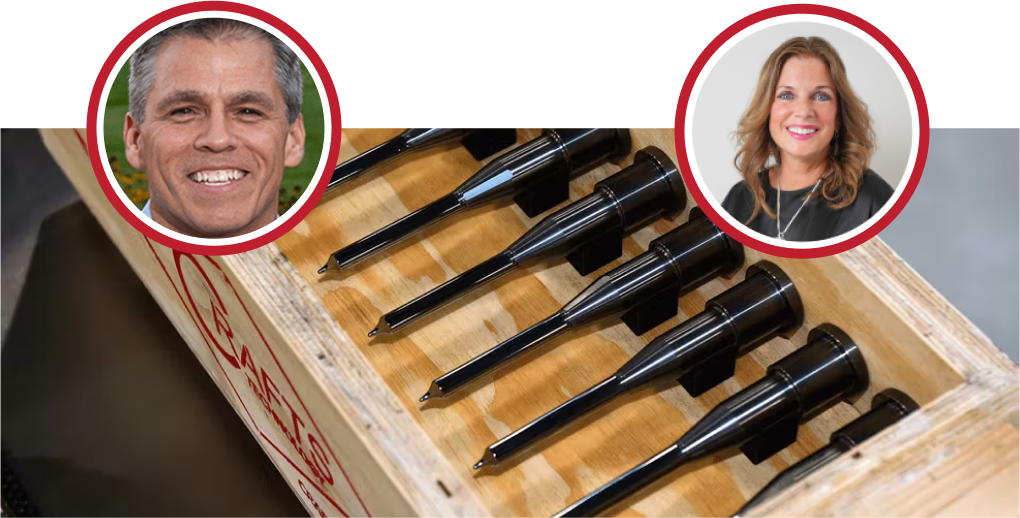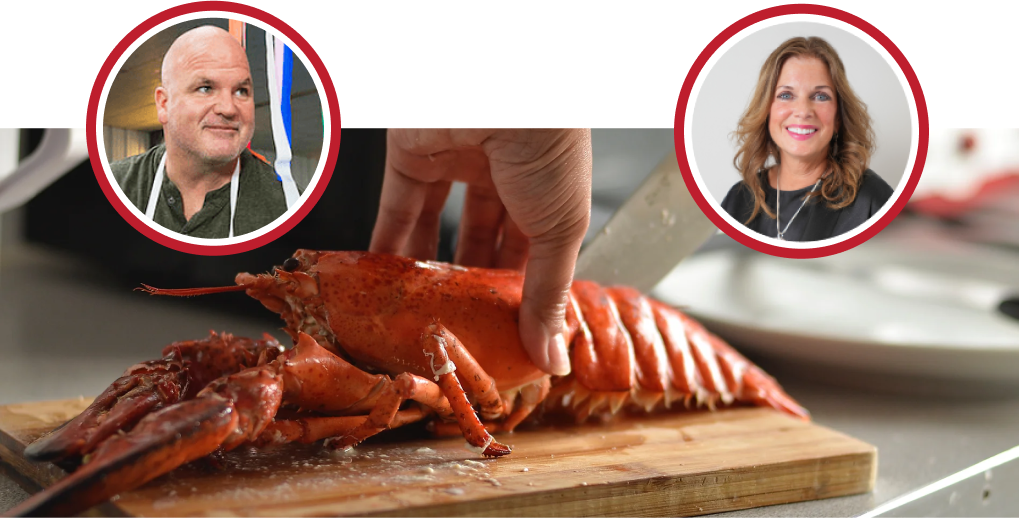Lisa: Welcome everyone to today’s “Business As Unusual” webinar series. We are so excited to have you joining us today this Thursday to meet two industry experts when it comes to looking at the customer experience but translated to the employee experience. So, get ready; we’ll be starting in just a few moments. I’d also like to welcome our guests watching via Facebook live, LinkedIn lives on Red Caffeine’s website through our live-streaming service there as well. So again, we’ll get started here in just one moment as we finish that up for today’s event. I always love we all get so serious, but it’s such a fun topic that we’re going to be talking about today, especially with having not one but two great industry experts in each of their areas of expertise to share their thoughts and insights on today’s topic well as I see our guest joining let’s go ahead and officially get started with today’s “Business As Unusual” webinar. I am Lisa Behning, Account Director, Red Caffeine, and I’ll be your moderator for today’s session. We are so excited to have you joining us for our session today, where we’re speaking with industry leaders who are helping us thrive and survive in today’s economic climate; we always joke that we build badass brands people want to work with and work for, and these two are definitely top of their field when it comes to helping build the employee experience. So, one of our guest speakers today is Rae Ali; she is the Chief People Officer at legacy.com. Rae has over 30 years of experience building authentic relationships between employees and their organizations. She is joined by Sean Helsel, VP of Human Resources at Union Tank Car Company. Sean is known for building winning teams through cultural talent and people practices. So, who better than to have both of these great leaders in their fields share information today. We’ll also be joined by Kathy Steele, CEO of Red Caffeine; for those that registered via zoom, you are lucky that you have the opportunity to meet one of five people to win a 20 Grubhub gift card for lunch today. Our continued effort to support the restaurant industry during these continued times of the pandemic is definitely inspiring to all, especially as we love supporting small businesses just like ourselves. So, congratulations to Bill D Nanette, K Sarah, M Mary Lynn F, and Marie S. You each should have received a voucher email yesterday valid for today. If you didn’t, please reach out to us; we’ll make sure we can get that activated for you. So again, if you’d like to be one of five individuals to win free lunch next month, make sure to go to our website and register via zoom, and you might be one of the lucky winners for our December event. Lastly, if you’d like to ask questions today, please use the chat function or the QA option. We would love to hear from you. Rae and Sean will be taking questions throughout today’s session as well at the end, so if you have a thought or a comment, please go ahead and share them with us. So with that, I’d like to go ahead and welcome Kathy, Rae, and Sean to today’s format; welcome everyone glad to be here.
Kathy: Thanks, Lisa, thanks for kicking us off. So, I think it’s important to highlight the illustrious careers of both of our guests today. So, let’s kick off with Rae. Could you just tell us a bit of your career journey and a bit of legacy, and then john would love to hear from you as well?
Rae: Yes, absolutely; thank you for having me. I like to be with badass people, so this is very fun for me, Kathy, to be with the Red Caffeine community and posting here with being on the piano with Sean. So, I can’t believe it when you said 30 years in HR. I was like, who’s she talking about because it’s I swear it’s really flown by, but I remember quite a bit from my early days, and I was fortunate enough to join a phenom right out of college blockbuster, which was a phenom from not only its product but also what was happening techno with technology at the time leisure lifestyle living I mean it was like kind of the triple threat for a 22-year-old who is going to do it nothing but work her who works her booty off. So, I had a great career there and was able to thrive in the late 80s and 90s and left blockbuster after 11 years as the director of HR for the Midwest division; it was like 20 000 employees, and it was an incredible career, and I was surrounded by so many wonderful bright leaders and mentors. So, it was such a great place to be and grow up really if that’s in my DNA even though videotapes are no longer it will always bring a little tear to my eye if I ever see or hear anything with regard to a blockbuster movie or just blockbuster in general , and then I was fortunate enough that through networking and getting an opportunity to try and be in a new industry I then ended up in the early childhood education industry which is a bit of a brutal business, and you’re kind of heavily regulated by licensing , and you’re still trying to run your business, so I was director of HR there for maybe 13 000 employees I want to say that company was maybe 97 female very different from the world I came from which was kind of heavily male over at blockbuster that led me to health care a startup type of opportunity and revenue cycle and I grew that and worked with some phenomenal people there and left there as vice president of HR ended up in hospitality through some networking, and so I got to learn that business and then finally now here at legacy.com. So, in my journey, I’ve been able to be in high fast-growing organic growth companies, turn around companies, and kind of start it is a type of environments which I love and all these different kinds of industries where I’ve been able to learn a lot about all the different businesses and legacy is one of the top 50 U.S. websites, and we host people’s memorialization stories their life stories, and we’ll, I can talk about that a little bit more later, but I don’t want to hug all the time, so that is my background.
Kathy: Thank you, Sean.
Sean: Yeah, I’m like Rae talking about the years of service is a little humbling. So, thanks for reminding me where how far I am in my career. So, I’ll start off. I had this great privilege to join Darden restaurants right out of grad school and work with some great people there, and in the short bit of time there, I was on the other end of an 800 line for employee relations, and I’ll just have to say I got exposed to a lot of issues in a short period of time on employer relations. So, a ton of fun, great people, and I had the opportunity to join Pepsi bottling, so the bottling arm of the Pepsi system had a great run there for 12 years took on some different roles that took me from South Carolina to Minnesota out to the New York area and went to join sears after that and what it was a great ride, and it learned a ton about myself personally and professionally some great people that just again learned a ton probably my most prominent. Could kind of learning professionally in that period, and then I’m with Marmon Holdings, Marmon Repair Shop Services; one of our brands is tax part of my responsibility is looking is helping lead the HR work for a union tank car pro core repair services as well as the the the Transco. So, having a lot of fun being with that organization for over about a year and a half now and great people, very practical at the same time very ambitious, and we have some really aggressive plans to grow this business, so having a lot of fun, and again thanks for the opportunity to join you in the invite and be part of the panellists’ team with Rae.
Kathy: Yeah, Sean, exciting time to start a new role in the midst of a pandemic. So, oh yeah, that’s gotta have been a little bit of a roller coaster year for a year and a half or so for you.
Sean: Yeah, no doubt, and if one thing was because the honest onboarding experience I’ve ever had, I joined and this turned into my office so but the one thing I would say you did quickly get exposed to the business and the people because they were also in the home office and so the video was able to accelerate a lot of connections. So, I didn’t have to manage travel schedules at that time, so there was some outside where I got to learn the people learn the business a lot faster than maybe I would have if not.
Kathy: Yeah, and thanks for both of you sharing your career journey. I think that we’ve got so many different types of people attending today and with large and smaller organizations. So, we just wanted to really sort of set the table for how much expertise you’re bringing from different industry verticals as well as both the size of the organizations you’ve been with or are with currently. So, thanks for setting us up like that. I think the one thing that we always like to sort of start with is opportunities for growth and work. Red Caffeine always thinks about that in terms of growth lanes. I don’t think there is a leader out there, not anyone in my network, who isn’t thinking about their talent strategy right now and how mission-critical it is to their overall ability to grow. We’re in the unique situation I think we’ve ever been in as employers, and so I, I really think this is such a timely topic, and I’m excited to dig in, so let’s get let’s really sort of start with that one headline that’s been permeating our news outlets we’re being told that this is a time of great resignation, so I’d love you each to speak to that headline topic and talk about what, what can we start to do in our organizations to think about? How we’re recruiting and retaining top performers? So, Rae, do you want to sort of take the lead?
Rae: Really! Absolutely, I’ll throw out a couple of things, and then Sean and I can go back and forth if needed, but a couple of the things that just we have to be absolutely thoughtful about is giving the employees, and this is starting to sound almost like kind of cliche but the flexibility that they need for the for them to do their best work. So, everybody assessed where they wanted to be in life after we were all locked down last year, March 13, or whatever it was in 2020, and people started to now prioritize what was important to them right. We’ve heard that we’ve read articles on that we do know that and so at legacy as an example was very important to us that our employees felt that they could absolutely be in a remote position and what that meant is if they came to the office one day a week one day a month or one day once a year we would be fine with that now that’s an alignment between our Founder and CEO and myself and a couple of the other execs where we feel good about that message, and we feel good to say to people that we’re going to allow you not only to just work remotely not only to not have to come into the office, but you can also live anywhere, so we’ve even had employees who come to us to say look my family’s in Detroit or some other city or on the West Coast would like to get back to that is that okay, and we’ve so far have made it all happen. So, that’s the other big piece to that, and then that’s sometimes that’s not even enough right because now other companies are doing the same thing or similar things right. So, there are so many things we have to take a look at that where you thought you were being so progressive or revolutionary, you maybe you’re just joining other places that were pretty progressive already before the pandemic. So, the other thing we’ve looked at, and we now announced literally last week to our employees, is we’re going to offer unlimited paid time off now. I know that’s not something every company can do; we looked at it, and we saw if that would work for us. It does, I’m sure, will not be without its challenges; no good deed goes unpunished, right? But it’s absolutely one of the other things that we’ve considered, and there are other things, of course, but I want to stop. So, Sean has a shot at answering this one too.
Sean: That’s, that’s fun to learn. Even though I’m a panellist here, it’s always just fun to listen to new practices and so on; a couple of things I guess made me think about that Kathy was the great resignation. It is certainly real for us, and it almost has a similar sort of maybe different label, but the similar challenge that we had when the war on talent right the fundamentals I think are a lot the same. I think what’s happened obviously is things have accelerated faster in terms of all the things we’ve been talking about around the engagement around the work-life transition from work-life balance to work-life integration and thinking about all the things that we’re experiencing now that have accelerated the last 18 -24 months. So, I guess the thing that the two areas that I think about for us as we approach this is one being, and this is this idea of controlling what we can control and the intention there or the design around that is that how do we continue to focus on providing positive experiences thinking about providing challenging growth experiences with an organization and those are the things that from our employee base they want we’ve been hearing that and continues to be important on their list of elements to keep them around our organization. So again, that’s what we’ve been trying to for have a lot of discussion around let’s control what we can control provide the right experiences the right practices right development right culture, and hopefully that aligns on the personal level and then the second thing we’ve been thinking about is our employees actually will never leave us even if they leave us and so again the thought around that is that at one point in their career we probably made the most sense now I would never want any of our people to leave but the individual decisions about whether they want to pursue different entrepreneurial experiences or they want to think about different challenges and their changes in their career what we want to be able to say is that if you leave us we want you to be proud of the experience that you’ve had so when you talk to the people your friends and family that may spur talent coming our way in return, and who knows you might be a w-2 with us in the future you might do a consulting contracting assignment with us. So, we want to be able to think about this that again controlling what we can control so at the end that when if people do leave that we’re still that experience was very positive with them, and it pays itself forward back to us.
Kathy: Yeah, I mean, I think that’s a fabulous idea. We’ve talked about that internally, as well as having an Alma Mater of past employees. I mean, we’ve got so many entrepreneurs who have started with our organization, and how could we even position them and their new businesses as part of our ecosystem and give them an opportunity to get access to our clients and get recognition for their new offerings and businesses, so I’ve also heard a lot about like recruiting you to know your current employees are there some things that you guys are doing to really to continue to endear your employees like almost like when you win a new piece of business or when you have somebody that’s just starting with you what are the things that you’re doing to keep actively engaging with employees even if they’ve been with you seven ten-twenty years?
Rae: Yeah, we, I love what you said, Sean, and it’s sometimes there are companies that have a culture where they really don’t they don’t wanna do that it’s like you, you’ve worked here goodbye, and they’ve done right, and I think that I’ve been fortunate enough to work at a couple of different companies where that is the culture that we want to your know want to encourage especially even here at legacy, have a founder who’s a McKinsey alum right. So, he more than any, not just more than anybody, but he gets that where you’re part of some group, and you will forever be part of that group, right, so if somebody leaves us, they’re part of the legacy family, and what I’ve even said to people and I know that our CEO has equities our president exactly this CFO and CEO of echo this forgive me if I repeated that is hey, Kathy we hate to see you go we’re super excited about your new opportunity and if for some reason a day in a weekend or six months in you’re like what did I do, please call and let’s talk about you coming back to, legacy family because sometimes that does happen where you make that change don’t ever feel like oh, I can’t go show my head there I can’t go do that, so that’s one piece to the question of what are we doing to kind of try to keep connected with the people that have left, and then we have we do have a tight following of people who keep in touch with a lot of us. So, we kind of keep tabs on folks and have reached out to people who have left us even like a year ago or two years ago because so much has changed in our company and how we’re growing that even whoever left in 19 or 2020. We’re already in a different place in space, we’re already looking to grow in different areas of the industry, and so I might have an opportunity for you now I didn’t have when you were here a whole year ago a whole year and a half ago. So, we’ve absolutely reached out to others too to do that.
Kathy: Yeah, I mean, I think we’ve, at our company, changed our employment strategy. So, we’ve had people that have gone from full-time to a contractor just, and it’s been great. We haven’t really lost them entirely, but they’re exploring new opportunities for their career growth, and we’re still able to tap into them as great employees at Red Caffeine as well. So, let’s switch gears and talk a little bit about recruiting because this is like we are like fighting hard for people these days it is its I think early in my career, I can remember this kind of heated battle for key employees and resources and I think many organizations, especially in places where we’re trying to fight for hourly employees where they’ve got way more choices than they’ve ever had before. So, what are some of the ideas that like creative ideas that you’ve used in your recruiting efforts?
Sean: I think what may seem maybe dull for us might be creative somewhere else or vice versa. I don’t think. I probably, I think, have something to share that’s really highly creative. I always get amazed talking to my team about the different things that they do because a lot of our shops and operations are in these really small or relatively smaller communities and the things that they’re doing are just it’s always just fun to listen to how they’re thinking about building connections to community organizations partnering with the government agencies trying to make what we have as relevant to the communities in which we do operate. So, we don’t necessarily have a kind of one size fits all, and I think that works for us because just the spirit kind of nature dispersed nature of our shops and very smaller locations. So, we’ll see things like I’ll get these nice things around driving toys for tots or the food bank and why I think that’s important from a recruitment standpoint, and we may get to this at some point, and I don’t want I come from an authentic place for us is that it is about taking our brand and how important it is to think about our brand intentionally what do we actually want to present to candidates out there about who we are and what we stand for and whether we might not be actually accepting applications at one of these community events the most important thing around this is that we’re finding ways to be engaged and our employees are involved, and that’s where we’ve been doing a lot of work trying to find those ways of connecting to the community as a byproduct of that being able to recruit the talent into our organization.
Kathy: Yeah, I love that. I think having even a bigger organization has that local focus; I think that’s absolutely important. So, Rae, what are some of the things that you guys are doing?
Rae: Yeah, on our end, I’ve tried to take a look and see how we can get absolutely, what I call kind of mix it up right where you’re kind of trying to run a lot of things in parallel in tandem. So, one of the things that has been absolutely critical or one of my goals for this year is to really focus in on any areas with regard to inclusive diversity, and so I had found a couple of different recruiters to help me one was a retained search in that we were looking to add a Vice President to our group and I specifically went to a black owned executive search firm, and he was tremendous, and he helped us find and identify a vice president to come in and head up our business intelligence and analytics department additionally I had contracted another recruiter to help with some positions where they’re everywhere from hourly on up to maybe Director level, and so she has an incredible background been around like 30 plus years African American, and she’s been tremendous in guiding us too where she’s even tapping into and having conversations with in different areas or groups that but that dedicated focus that has helped us really kind of open up a little bit more and the other thing is I don’t ever think that HR has all the answers because we just have to evolve and keep up with whatever’s happening in the climate whatever company you’re at whatever reflection point you’re out of the company. So, I lean heavily on a couple of my vice presidents in technology and in product and operations, so they have some tremendous ideas and where they even get involved pretty heavily where they want to come up with create the assessments they want to be involved in the hiring even for people they may not report to them, but they want to be part of that they want to post in places that are different than LinkedIn as an example because they got these little niche spots that they want to post and we’ve taken those ideas and worked with folks like that so like I said we still have a long way to go too, and we’ll get into this later which is excitement recruitment and branding and all that good stuff I think we have some great opportunity there for our company but so far we have tried a variety of things to happen in tandem oh, and one more if I could add is if we see we’re going to need to fill a position we are absolutely looking internally like you should but really trying to be open-minded with what’s really missing from somebody that we wouldn’t promote them is it because they have not had management experience is it because they are not they don’t have some certification is it because well can we handle that I mean can we still move them up promote them and support them and either get them the resources they need and or the certification that they need and I and that’s something I want us to do more of with career pathing, but I would say that in those probably three or four examples that’s kind of where we’ve spent at least 2021 for sure.
Kathy: Yeah, and I want to go on to that some of those other questions, but I do want to remind you about one thing I thought was really important that you share with me as we were kind of prepping for today’s session is about speed really being quick to react to people in the hiring process not letting people stay in the funnel too long so can you speak to some of the things that you guys are doing around accelerating.
Rae: Yes, absolutely. I am now remembering one of the things we talked about it’s not always easy to do, but we’ve had some departments where we’re going to hire like multiple people for that department, and there’s kind of this essential agreement that we want to really prioritize and clear your schedule where you can make so that if we have a couple of candidates that have come through, and now they’ve made their way to final candidates than those final interviews, we will have everybody interviewing that same day. So, it isn’t always doable. Sometimes there maybe get one more interview to be added on or what have you, but we try to have all that on the same day, and then if we can come later in the day or the next morning, we do debrief. So, it’s kind of like Susie Q and Matt and what do we think of them, and now we’re all here it’s like speak now forever all your peace, and we go through why would we hire them why wouldn’t we hire them to go through that whole assessment of the candidates and then once we have identified, and I have a hiring leader says, oh yeah, that’s it Kathy’s if we need to bring her on then I have literally me and my team our commitment is like we’re going to hustle to then get every all the approvals for the hires I’ve made offers on Saturday on Saturdays of course I made offers at nine o’clock at night just to get make sure that I got that offer in the ear of the candidate would then of course offer letters followed up later, but I’ve even said to the candidate if they’re free I’m sure you’d like to take a call for me with an offer versus you’re still waiting another day or two and you’d be surprised how many people are like I don’t care if you call me a midnight like I love that you’re calling me with an offer right. So, those are some of the other things that we’ve done, and it takes commitment because not everybody’s schedules can align and so but that is one of the things that you’re reminding me we do as well.
Sean: That’s so funny about the weekend and other creative ways we’ve found a way to act fast. I’ve had a hiring manager have one interview at a park because they couldn’t find schedules to work, and it was on the weekend, and they found they met at a park, and I mean, I remember interviewing a few candidates on the weekend, and it was just not anything that was onerous of just that really great talent want to have an opportunity to have a good discussion, and so it’s so interesting how things have shaped on some of our behaviours to do things we haven’t thought of before so.
Kathy: Yeah, no, I love it. So, lets your kind of keep this question up right around marketing’s role in recruiting. I really feel like up until last, maybe the last couple of years, we weren’t really seeing this integration of marketing and communications teams or marketing having this role this really significant role in the hiring process or talent management process. Can you speak to what you guys are doing or what you’re seeing, or what you would love to have in terms of marketing and as a partner in this?
Rae: Yeah, absolutely. I mean, I’ve always been excited about marketing being a partner with HR, so in all the companies I’ve ever worked at, my partner, of course, is going to be the CFO right he has finance you got HR, but the other partner I also love to have you partners with everybody we know that, but it is the marketing partner because we’re attracting people to us. So, your world is you’re attracting clients, consumers, and customers. I’m attracting employees, but we’re attracting people to our company we’re attracting people to the brand whatever that is, and so I like to be in sync with marketing I want to know what is our brand or branding is if I join a new company I want to know how are we positioned in the industry and in the marketplace and then how can I now work with my team to attract and recruit people so that we are this kind of formidable force, and it takes time it takes years it can right to kind of have your brand whatever that is and especially like us here’s where we have massive opportunity is the company I joined in 2019 is not the company that it is today because we were somewhat of a straightforward business with regard to how we earned revenue if you will, a third of our revenue was x a third of our revenue was x and a third of our revenue was x right and so it was kind of a simple straightforward way to be in the space and I remember thinking well I want us to leverage LinkedIn more for recruitment branding or attracting people and the folks that I’m chatting with at times like yeah we haven’t quite found that balance because legacy is about life stories or moralization people passed away all most of our customers or people that call us they’re grieving like they’re having a hard time, so we don’t want to be bragging we don’t want to appear that we’re bragging that we’re doing these great things at legacy and so it was kind of like well there are other places that I think might be even more morbid than us believe it or not or might be even more have more tragedy or just as much tragedy happening, but they’re still going to let themselves look like they’re a great place to work they take care of their employees right this would be a great place for someone to start a new career kind of thing. So, we’ve been inching along on that since I’ve been here, but I want that one like as I’m working on my budget now I like I want that in 2022 I want that to explode a little bit more because I think we have a lot of opportunities to showcase we know how to take care of our customers, but we also know how to attract employees to do good work here.
Kathy: Yeah, I mean, I think that Sean probably would share that in industrial manufacturing situations, that perception of the role of the job of the company because of the market perception is sometimes challenging. So, Sean, do you have some ideas to share there as well?
Sean: Yeah, I think we all know we just live in such a transparent world and almost everything’s democratized anybody can see almost anything and so we think about just our brand is just more than what we do it’s our people as well and so to your point Kathy that we don’t have a consumer-facing product or service. So, people don’t know who we are? What do we do? Who are you? And so it’s a great opportunity to showcase some of our employees how do we talk about what careers look like, how do we talk about the connection between our work and the work that the consumer has; it’s just an opportunity to tell our story and shape it and then be able to showcase it in the right type of formats, and so we actually did we started Pam BoJack, who’s on the Transco team. She’s HR director, and she created a partnership with Transco and a marketing agency they weren’t an employment company they thought about brands, and they connected with her and the team and to tell the story and I had the opportunity to get that launched here very soon and so that’s how we think about just like this HR marketing communication they’re all co-pilots in telling our story not only to our customers but also to our potential employees going forward and just one thing it’s not I don’t want to lose here it’s also just a great vehicle to instill pride of our employees that we have to talk about what we do and to see their brand and see their company and what we how we partner with other organizations and just to showcase the value that we have there so just to Rae’s point there’s just so much of a connection and a very symbiotic relationship in this world that we live in now you just don’t think you can operate effectively when you’re mutually exclusive between HR and marketing communications they really need to be connected.
Kathy: Yeah, I mean, well, we couldn’t agree more; we know that’s part of our mission it’s, it is definitely everyone’s selling there you’re always your people are in most of our organizations your product so how do we create ambassadors out of our team to help to drive what’s going on in our culture and why we’re a great place to work and make they could be aware for customers as well as additional employees to be brought in. So, we wanted to just kind of also sort of talk about what the talent pool looks like? What are you guys seeing? How serious is the talent shortage in each of your respective sectors?
Sean: Yeah, it’s real for us. I think we think about the work that we do it’s a very people-intensive business that demands a set of skills around well similar to a lot of the trade skills right and so welding and not that we’re a craft shop, but ultimately they’re just a lot of hands-on really talented skilled people that that is needed in our business and so on two ends of this we’ve been this company’s been around for a long time, and so we do have a lot of people that are thinking about retirement they’re on the older age of their career, and so we’re thinking about ways in which how do we give them an opportunity to still contribute but maybe not at the same number of hours that they did before. So, it’s caused us to think and be creative around how we have to change some of our old legacy practices into ones that can maybe fit for the individual in the organization, but we’re also feeling on the front end again, the trades are not something that again high level emphasize broadly in our an education system to younger workers and so what we see is a lot of talent that comes in they have the great ambition, but they don’t necessarily have a lot of the practical experiences already. So, it’s really putting a lot of emphasis on how, how our onboarding, how our training, how our mentoring, how do we design that to accelerate the productivity of all of our new hires because they’re not going to have a lot of those skills that maybe we did those candidates had maybe 20 years ago so that we’re feeling on both ends right there and so and again going back to not to re-emphasize this too much but again controlling what we can control in terms of delivering the experience to drive the retention up, and so we don’t have people departing from us. So, certainly being challenged on a lot of different fronts in this talent challenge.
Kathy: So, just a follow-on question, Sean, do you have both full-time and part-time or like contract hires as well or in your workforce?
Sean: Yeah, dramatically heavy full time yeah, okay, half of our shops are unionized, and so there are some things some challenges we have to work through there, but yeah, but our legacy mindset practice has always been full-time.
Kathy: Okay, all right, awesome, so Rae, what do you see in terms of talent shortage?
Rae: Sure, I see things on two fronts, so the first one is okay. We’re trying to fill positions and attract positions everywhere, from hourly positions within our marketing department up to director level positions within product technology, maybe even some other corporate departments like accounting and Mark, maybe did I say marketing for giving? I don’t know if I said market okay, Director level above hourly marketing and Director level above in marketing as well as in technology and then some other departments like accounting, so we’ve seen perhaps when we’ve posted, or we’re advertising we’re looking to fill positions we’ve seen a great response and what do I mean by that so if we had posted a position we’ve got a great response of people who are highly intrigued, and I would say even highly qualified I literally just had to hire for an HR director role, and in addition to tapping into my network and having my peers referring people and having people have worked with me in the past have checked in on me or whatever, I also got about over 200 resumes in just the first few weeks interested right in the position and so that that was I was not alone we’ve had other positions we’ve gotten a great response. So, that’s fantastic there are a couple positions maybe where we’re like okay we’re having a little tough time hiring or pulling or attracting people away to come in here what opportunity we have but so far knock on wood it has been going well the other front I want to give you is when we’ve lost our folks we’ve had some folks who’ve worked with us five years or eight years and couple cases 15 years who left for this brand-new opportunity the grass is greener there’s something great happening on the other side of town, and it’s easy to just go well even for them to say I’ve been here so long I don’t even know what else I could do or where else they could work right sometimes you’ll have some people say that sometimes and then the quick assumption can be well I’m sure they’re going to go work with so-and-so over at such and such company because people checking with their old cow the colleagues that have laughed, and I can tell you that there is a strong number of the folks who’ve left and even just since June that their opportunity is a whole new industry they don’t know anybody there and they maybe even not only maybe they didn’t even get that much more money but it or they could have gotten a promotion okay greater scope of responsibility perhaps in some area, or they get to do like if they’re wearing four hats here they get to go, and they get to do one job because maybe they joined a bigger company right, and they were just called out of the blue and I have folks from the west coast sniffing around for my people and as the west coast gets to tap into the Midwest, and they get to get amazing talent with great work ethic and and the salary that they would offer would still be could be mind-blowing to some people, but it isn’t always just about people having left for the money, so I think that was another thing that I saw that kind of warmed my heart too is even though people were leaving, and I hated that they left I hated it I was so happy because they were now going to try and do build a whole new career in a whole new industry, and they don’t know a soul where they’re going so to me that’s that what that’s telling me is that the talent is out there because people found it in my company and in most of the positions I’m finding it as well when we’re trying to fill our spot.
Kathy: Yeah, well, that’s so interesting. I guess just a personal observation we’ve conducted some job fairs for one of our clients, and it’s been interesting because I really do think digital-first and most of my talent initiatives, but it’s been interesting to see the turnout of both employers and candidates and a cost all spectrum. So, I do still feel like there is some work for all of us to do around connecting to people that are out there, either underemployed or unemployed or looking for a career change, so let’s talk a bit of digital transformation. I mean, it’s accelerated in all of our organizations in a lot of key areas; what kind of things are you adding in terms of technologies to your talent strategies? Currently, or are things on your roadmap for next year?
Sean: Yeah, one of the exact it’s a great question, and it’s one in which I think again for this company that’s been around for 100 years or plus probably if you looked at what we did 100 years ago to what we do now you wouldn’t think a lot of has changed I don’t know that kind of been around that long, but people would joke about that and over the last two years as we’ve been thinking around our growth strategy and seeing that the number of people that we would need to hire we’ve accelerated the investments in innovation and automation because a lot of the work that our teams do we they’re they’re putting some really dangerous positions and so if there are ways that we can think about automation to make the work safer to make their jobs easier we’re going to a lot of our shops a paperless shop again if you can imagine again strings binders of paper that’s how we have been operating for many years and now going to an iPad and to be able to make that easy and the people in our shops I mean there’s always going to be a little resistance to change, but most people are getting they’re used to in their personal lives operating in a digital world and so our ability to sort of match that from their personal experience to the professional setting that we also are investing in these things to make the work easier to do to make the work safer and in some cases it may mean that we may not need as many people because we’re taking the danger and the safety risk elements out, so I would there’s certainly some HR technology that we’re investing in as well on how to make it easier for candidates to actually apply for us, I mean we all know that you’ve got to meet them where they’re at and where they’re at is usually they have a phone on the other end of their arm and so how do you make it easy to engage them make it easy to express their interest, so there are a lot of course tools out there to be able to do that and that’s other areas we’ve been exploring around that.
Kathy: Yeah, Rae, anything on your end?
Rae: I think for us, we’ve had our own challenges considering we’re in some ways we’re not only like media publishing, but we’re also a tech company too right. So, we had our own challenges because there were things that we hadn’t touched, updated, or helped innovate; in some cases, more than ten years that’s a long time in our world, right. So, there were a lot of departments that were just very manual, so like Sean’s examples, there were you wouldn’t think. So, oh, we’re a tech company. We probably have like all these opportunities they make things easier for everybody to do everything but no we every department had I think kind of assess where they needed to bring in technology. I know in HR for sure manual in a lot of different perspectives or different areas of HR, but then there are others where we’ve literally done some implementations to make things better with regard to performance management, or with regard to well-being I mean we didn’t even talk yet about well-being well-being is huge in addition to okay retention and recruiting the right talent or trying not to miss a beat on what you how your employees are doing or feeling is well-being I mean whether we like it or not back in the day it was people would work they got their benefits packaged you gave them a nice little maybe vacation schedule, and we’re like what more do people want like right it’s a clean environment and yeah and nowadays, it’s there’s just never enough like I could have a long list of all these things companies do offer whatever and employees will be like and what else there’s just it just is its I see like companies having maybe a psychologist on staff a therapist on staff if they can afford it, or they’ll allocate resources to fund something like that or something in like years to come because mental health and well-being is so much about every employee and how they’re showing up to work. So, when I’m looking at benefits and all my medical and dental, and we had, I implemented a kind of savvy tool for well-being because I really wanted people to be talking about their mental health and be rewarded for anything they were doing with regard to mind-body-spirit I don’t care if you read a book I don’t care if you did yoga I don’t know if you did 20 minutes on the peloton like go ahead put it in, and you’ll get tons of points for all sorts of stuff and those points will turn into gift cards, and that’s one of the big things I know we did this year with regard to leveraging technology was I wanted to be as innovative as I could with our mental health and well-being, and I still have a long way to go I think there’s still so much more that we can be doing with our folks too.
Kathy: Yeah, I think that’s like the super key. One thing to note is I do feel like HR technology has become more mainstream it’s a lot more affordable there are a lot of players you definitely could automate many aspects of a candidate management experience and growth pathing in career development, but I love those kinds of ideas, and then we’ve been so challenged to think about what what diverse perks beyond benefits that we can offer employees and how are we when you’re smaller how are you competing against the big guys who can offer student loan repayment whereas a smaller organization could maybe not likely offer those same compelling benefits but maybe could do something more individualized because they’ve got a smaller group, and they could really tap into something that somebody really wants, but it’s not like one-size-fits-all benefits so as we’re kind of getting to the final few minutes I’d love to have you guys talk to some of the trends that you’re seeing for 2022 and I will let Lisa take it from here to get some questions from our audience both live and on the streaming applications so Rae what are you thinking about in terms of trends.
Rae: Yeah, I think I was sort of maybe didn’t realize that it was kind of going there, but to me, it trends in the well-being space absolutely hands down trends with regard to anything that would give people the flexibility to do their job where you can, I see as being huge any and all things with regard to inclusive and diversity really pushing yourselves to take a look at do we keep just kind of hiring the quote same people or even referral programs which I love can bring on more of the same right so really pushing yourselves to see do we have opportunities for women do we have opportunities for people of color to move up to the director and or executive or do we need more people at the director level and executive level. So, we’re very thoughtful about that because we’ll just keep doing the same old thing, and so when you have those opportunities of a director position opens up, or a VP position opens up like that’s a big opportunity right there to say no we want to be thoughtful, and we want to take a look at how we can be much more inclusive, and studies will always show an incredibly inclusive diverse workplace makes for a much better job in every way shape or form. So, I’d say those are my three I’d say those are three big ones.
Sean: Yeah, I’m going to piggyback off, especially the well-being, and maybe the way I think about it is around it’s almost like a holistic approach to our employee and their life that they have and the challenges, and it is a way it’s a different way to think about how you can attract and not only retain and really cultivate an inclusive organization that takes into consideration a lot of the life challenges that all of our employees face right. So, I just may be another take on that second thing. I guess I would think about its similar to what race is, but I think it’s this idea around how do we be really intentional about the culture. I think culture matters; it can be this lubricant to how we get things done to the results that we want that makes the workplace that we want. So, it’s a bit of I just it might seem old-fashioned I don’t know but just this idea around just aligning this idea around the beliefs, the values, the ambitions you have as an organization how do we and get those all aligned, so people really feel this connection of purpose and and meaning to the work that they have, and it’s aligned with the type of work that you want and the values that you have there , and I think and I think the last thing I would say I could be a bit of a data nerd but the reason why I like data it helps I think in my experiences sort of guard against the bias and I think flawed mindsets , and again it’s when you think about those three things around think of this holistic approach being intentional about culture kind of leveraging data it is about trying to provide the experience that’s going to attract or retain the right type of talent the diverse talent inclusive organization that’s all cared about getting to the results that we want the way that we want them to get done. So, I don’t think again some of that’s old-fashioned, I don’t know if it’s anything new or trendy, but I think it’s really fundamentally important.
Lisa: Thank you both for your great answers. Well, as we look to close this out, there are just a few other questions we had come in. So, of them, both of you have kind of touched on how you’ve helped recruit a little bit more of a diverse workforce or a more inclusive workforce? So, do you have any other advice? I know, Rae, you would mention going to hiring experts looking at minority-owned businesses, but what other advice would you have for someone trying to start building a more inclusive or a more diverse workforce?
Rae: Yeah I mean, I would definitely say it do you have the resources internally to sit down and think be thoughtful about how to open up and attract people from a variety of different areas and groups and demographics and I know for us, It was important to me that I was if, I was going to throw something over the fence to any contracting or a staffing firm or a search firm it was important to me that company would have been owned by let’s say a woman and or is heavily led by women and people of color and so that was the one of the biggest things I absolutely was focusing in on I also have an action team I lean on that’s our idea team and I formulated that group when I first joined the company about three years ago and the idea team is our inclusion diversity equity and accountability team and that is a cross-functional team cross-functional by department by levels by race demographics everything and you could tap in tap out, but we still have our core group of people and checking in on them and asking their perspective and trying to be more mindful or thoughtful in that regard and that’s just on the HR side and that’s just on attracting employees I haven’t even gotten to well what could you do to partner with your marketing department and how would that look if you want to really put to the work and be thoughtful about inclusive and diversity what about sales? What demographics and customers are we going to look for and find that makes a big deal to that someone who’s a woman or a person of colour joining a company and seeing that there are efforts put behind all that that’s important too because it’s one thing to attract and have and hire the people it’s another is that inclusive piece the belonging piece that’s harder than we attracted a diverse workforce but what about the belonging piece do they really feel welcomed and part of it, and there’s time for a change, or we just ticked off a few boxes got to be honest with yourself.
Lisa: And how about you? Any advice on how you would build that?
Sean: Yeah, it’s funny, Rey’s last comment there, you do have to be honest with yourself you look at yourself in the mirror and of sorts, and one of the things we stumble upon as we’ve been thinking about our talent recruitment strategy is just the titling of our jobs, and again it seems so sort of small, but we do look at it does have some big implications around what messages are you sending the candidates when you have a job that’s a repair man well it kind of suggests that maybe you’re not open to female talent right. So, it’s, that’s again on a small level, but we’re doing some work around just those fundamentals. I have this bias to kind of work inside out. I think Rae’s idea of this spending time with the core group and talking about the topics, and it’s cross-functional, is not just insulated to HR. I think it’s even more important because it’s that I think Kathy would refer to this term as ambassadors. I mean, what we do and how we interact with talent has to come from all fronts, and it’s not just an HR responsibility, and so we about I guess it was early late last year we started doing that same thing having conversations around different topics related to diversity inclusion, and it’s I would say we’re still on this journey we have a lot of work to do, and again we’re really just focusing on let’s just be honest with ourselves what do we care about and do our practices and investments of our time and energy actually reflect those values.
Lisa: No, I think those are great words of advice and even talking on I was at an economic forecast breakfast last week actually in the city of aurora outside of Chicago was there in speaking how they’re even thinking through how to help their businesses and their community more on the front end of being able to attract key talent, but they were even thinking about different modes of transportation on how to get underserved areas into areas maybe with a job park or something like that or different ride-share options, but there are a lot of things happening, so thank you both for your advice there so with that we are coming up on the one o’clock Central Time hour. So, first, I want to thank Sean and Rae for your time today; this has been wonderful, amazing inspiring getting to hear all of your advice from your careers, what you see in the marketplace, and how someone, very quickly, I think could take key nuggets from today and apply them to their business starting as soon as next week, so thank you both for your time.
Rae: Today, it’s been great. I loved it. I loved it. Thank you, Sean, and thank you, Lisa.
Lisa: So, for those of you who are watching life or perhaps watching this recording later, if you do have questions for Rae or Sean, you can reach out to either one of them on LinkedIn. We’ve left their contact information below here, so feel free. We know all of our speakers are always more than happy to answer any questions that come up after the fact, especially when they’re talking about such a hot topic as the one we’ve covered today; all right, so as we move forward, wanted to share some exciting news that our Red Caffeine people plus people conference is being held January 27, 2022, this is something we joke that change doesn’t happen overnight, but you can become a catalyst in a day. So, this is a one-day workshop in-person event in Oak Brook, Illinois. We’re going to cover high-level topics such as presenting effectively on and off-screen. So, we’ve got an amazing presenter coming in for that how client advocacy leads to revenue growth and how talent strategy drives growth; it is a networking opportunity; it is a business development crash course, if you will, so check out our website people peoplepluspeoplecomp.com. You can learn more about the event there as well as register or hear some testimonials from our past years of running this conference, and the inspiration people have received walking through those doors for this one-day event; mark your calendars not only for our people plus people conference; in January 2022 but sooner than December 16 is our next “Business As Unusual” webinar, where we will be meeting with Nico Pipaloff. He’s the Founder and CEO of Hybrid Intelligence, so you might be wondering what Nico is talking about; when you look at that subject line, what do you really need to know about AI? Some key takeaways from this session are going to be how to start using data to advance innovation within your organization skills that you need to create the infrastructure in order to use these data analytics. So, kind of walking you through the process and then lastly questions you should be asking yourself what you’re hoping to uncover with the data and with that data, what problems are you going to solve. So, we’re going to walk through this process with Niko. So again, mark your calendar for December 16. If this is your first time watching a “Business As Unusual” webinar, we hope you enjoyed today’s topic; you can also watch past recordings when you visit our website at redcaffeine.com or reach out to us to learn more about how our growth consultant approach can help you with your growth market strategy. So, with that, I’m Lisa Behning, along with the Red Caffeine team and Rae and Sean; thank you so much for attending, and enjoy the rest of your day. Thanks, everyone.
